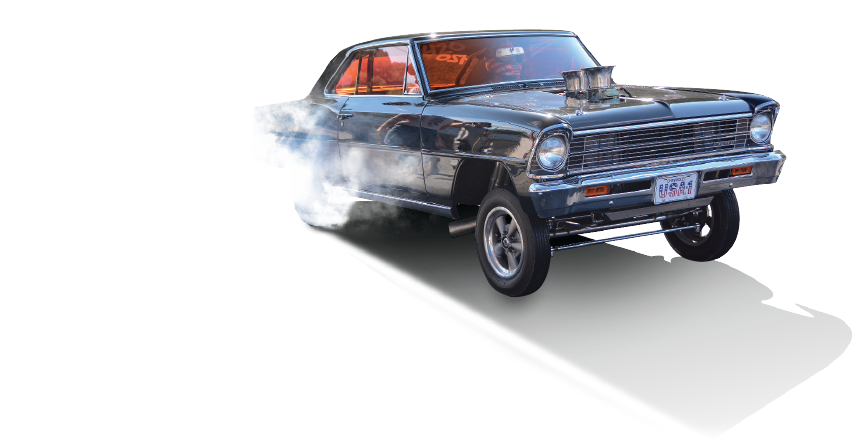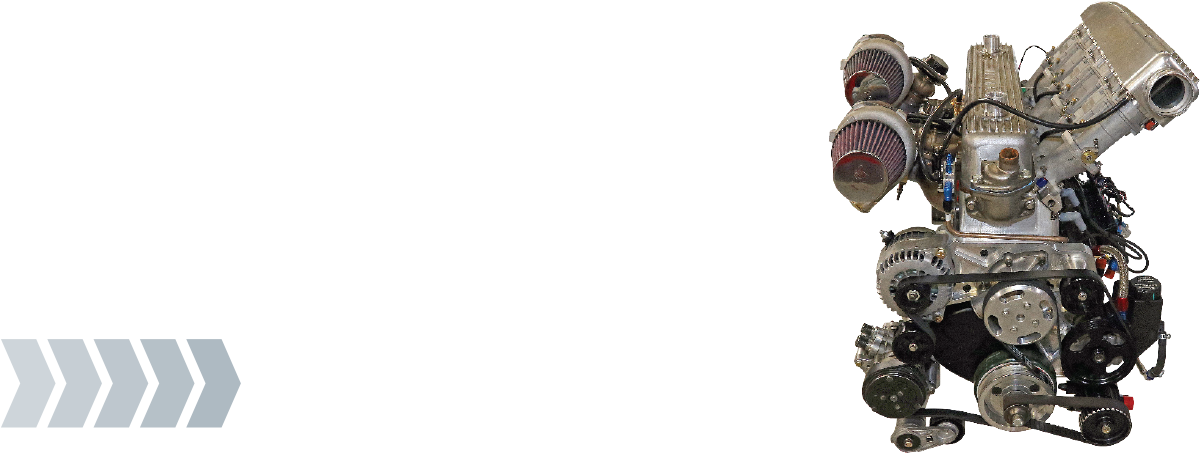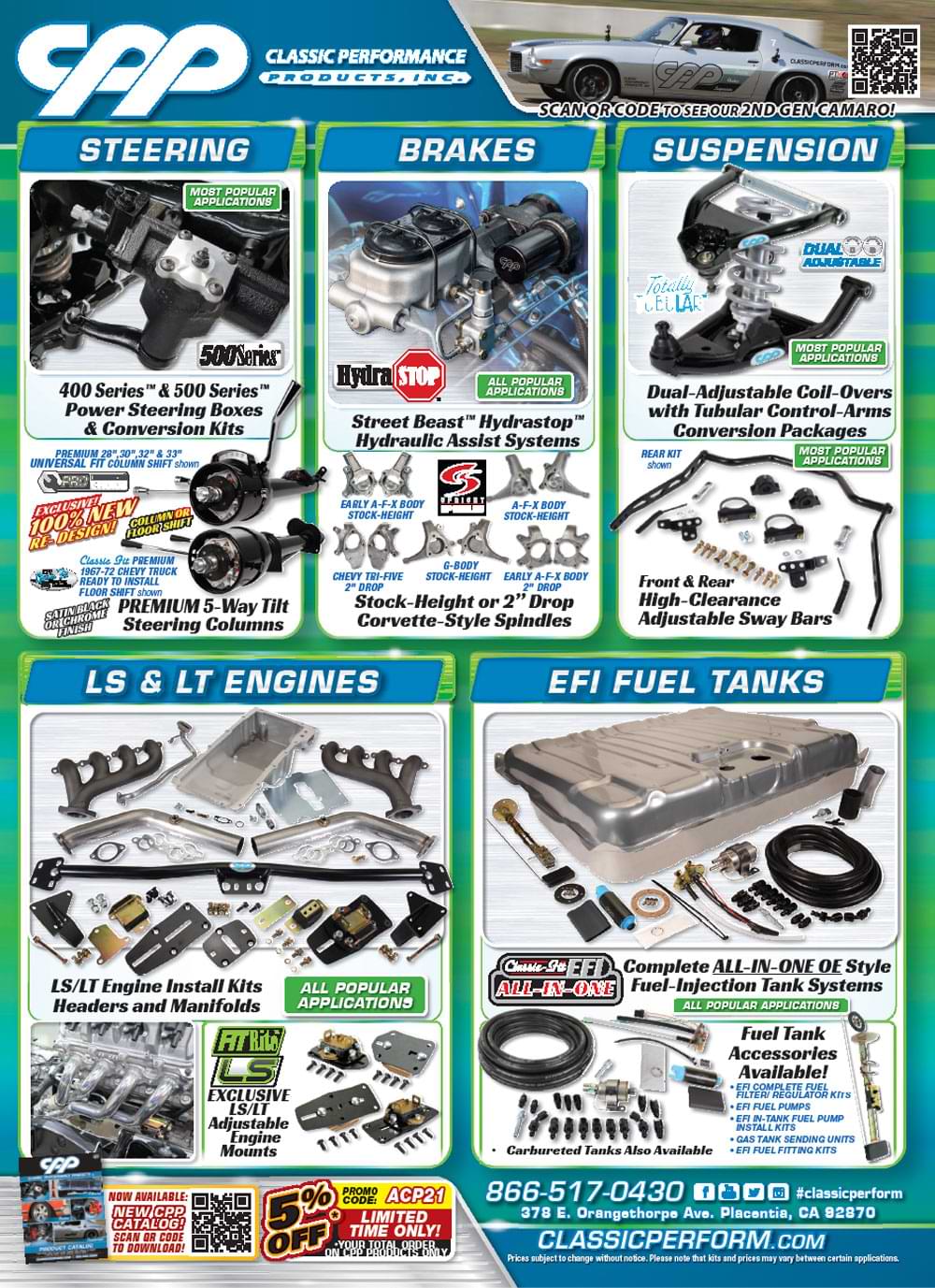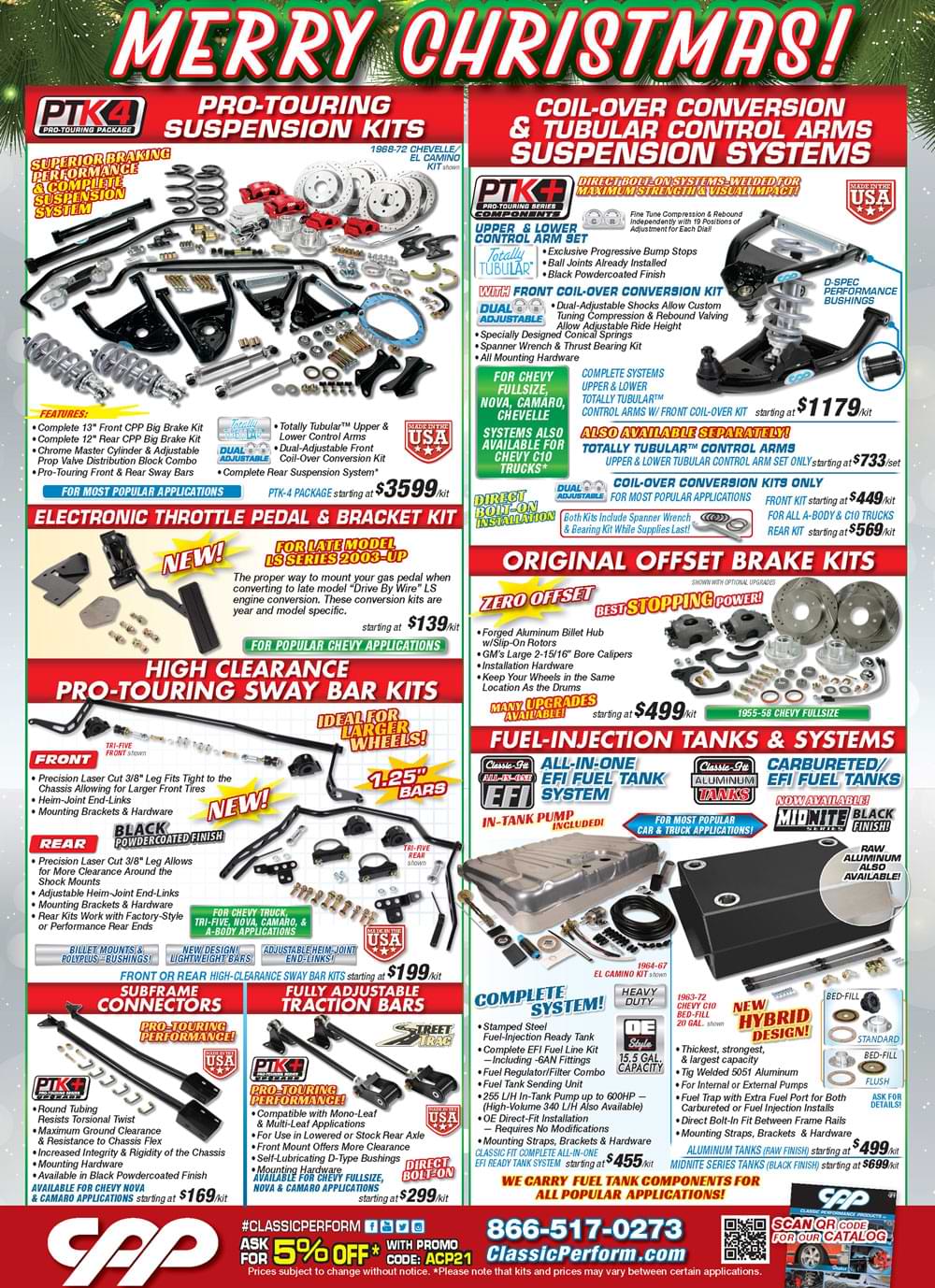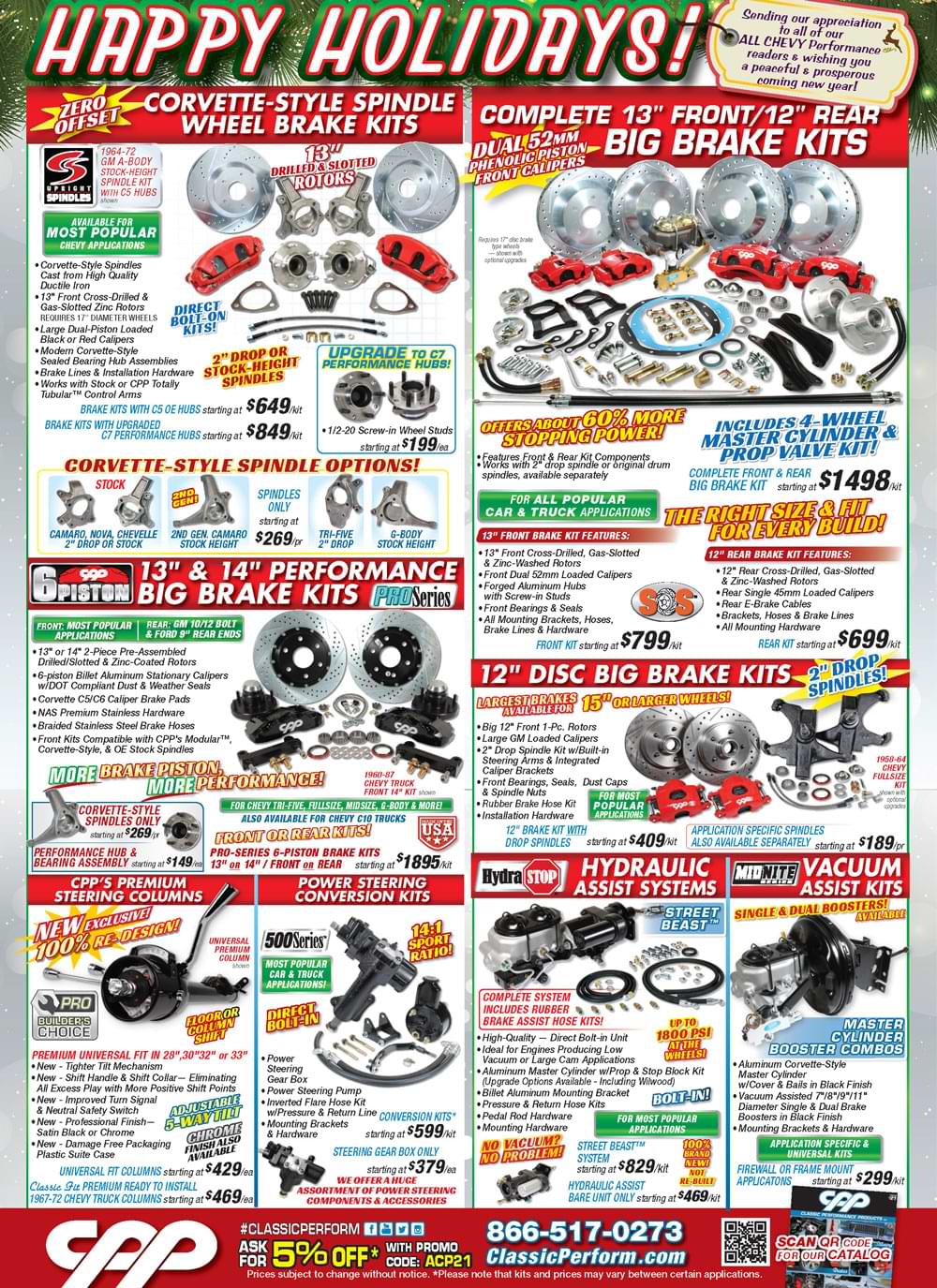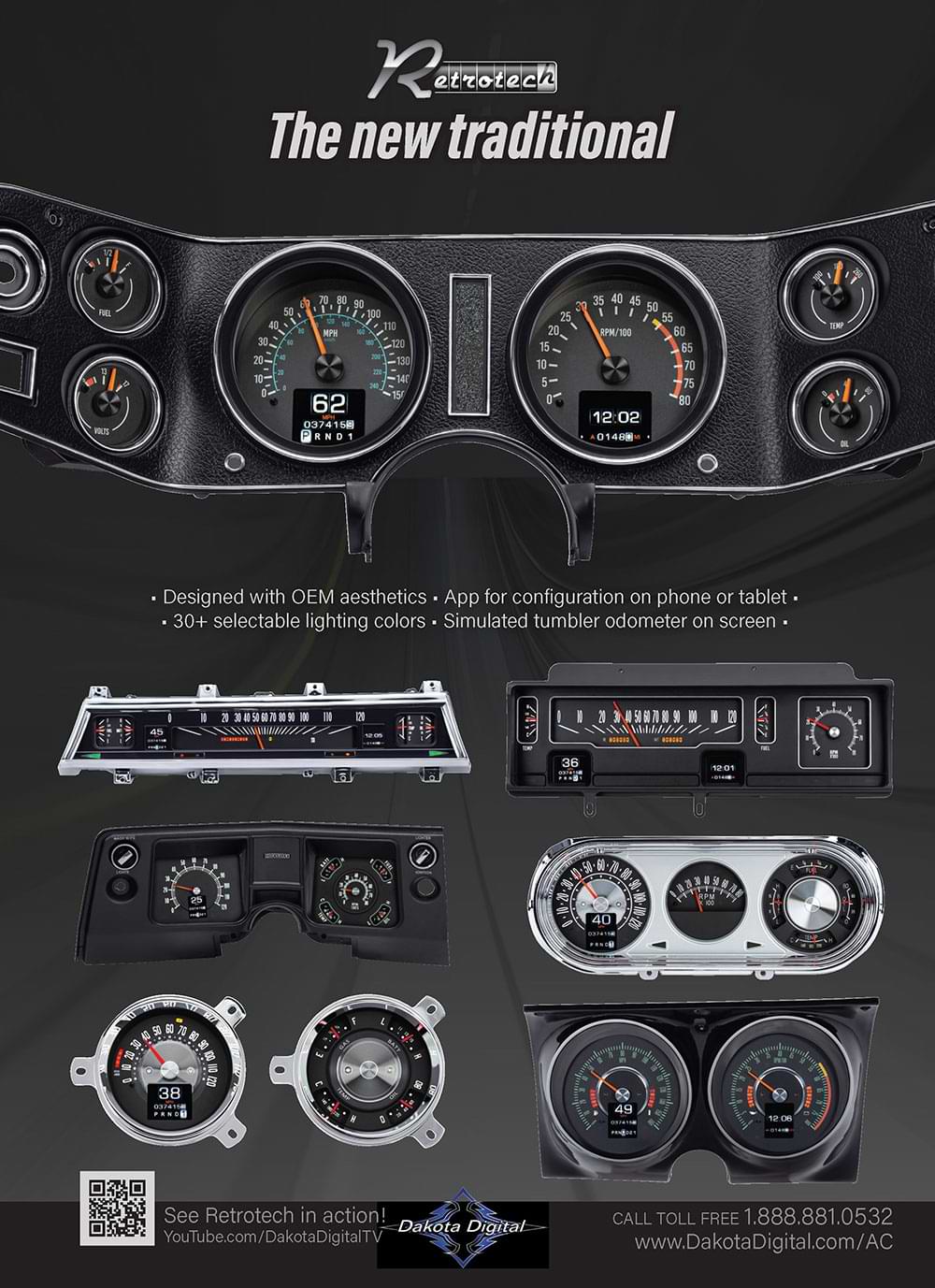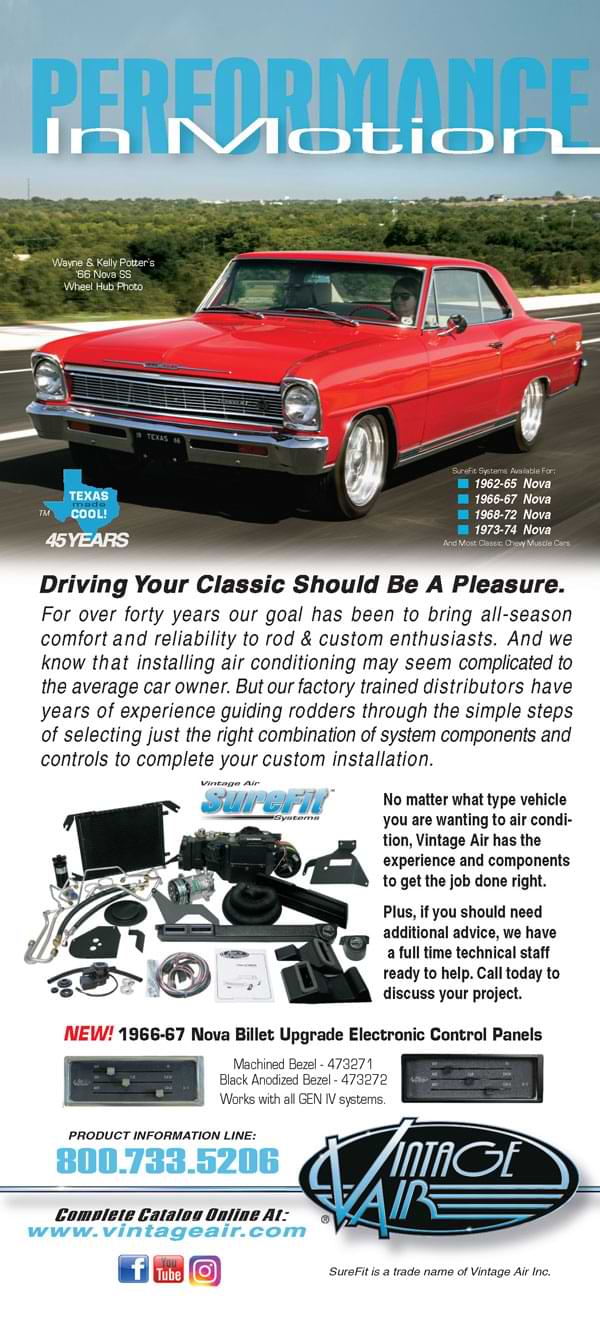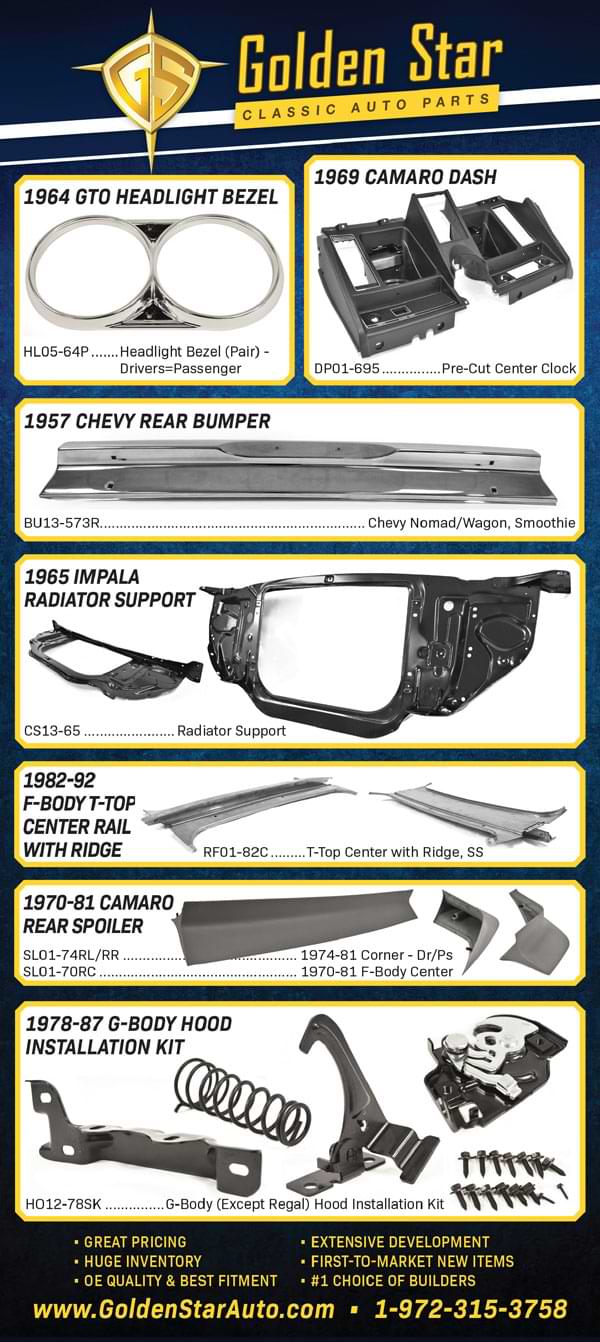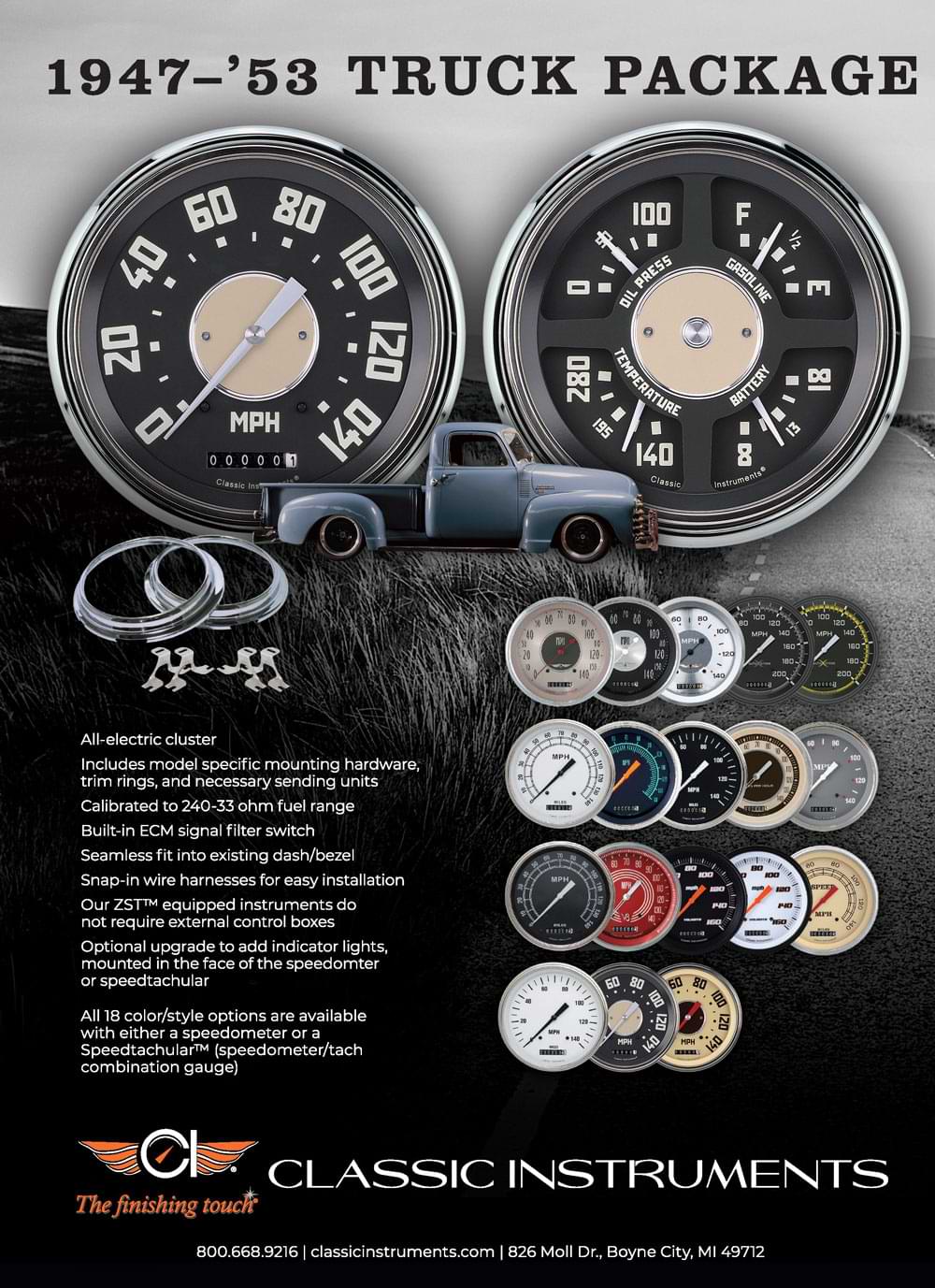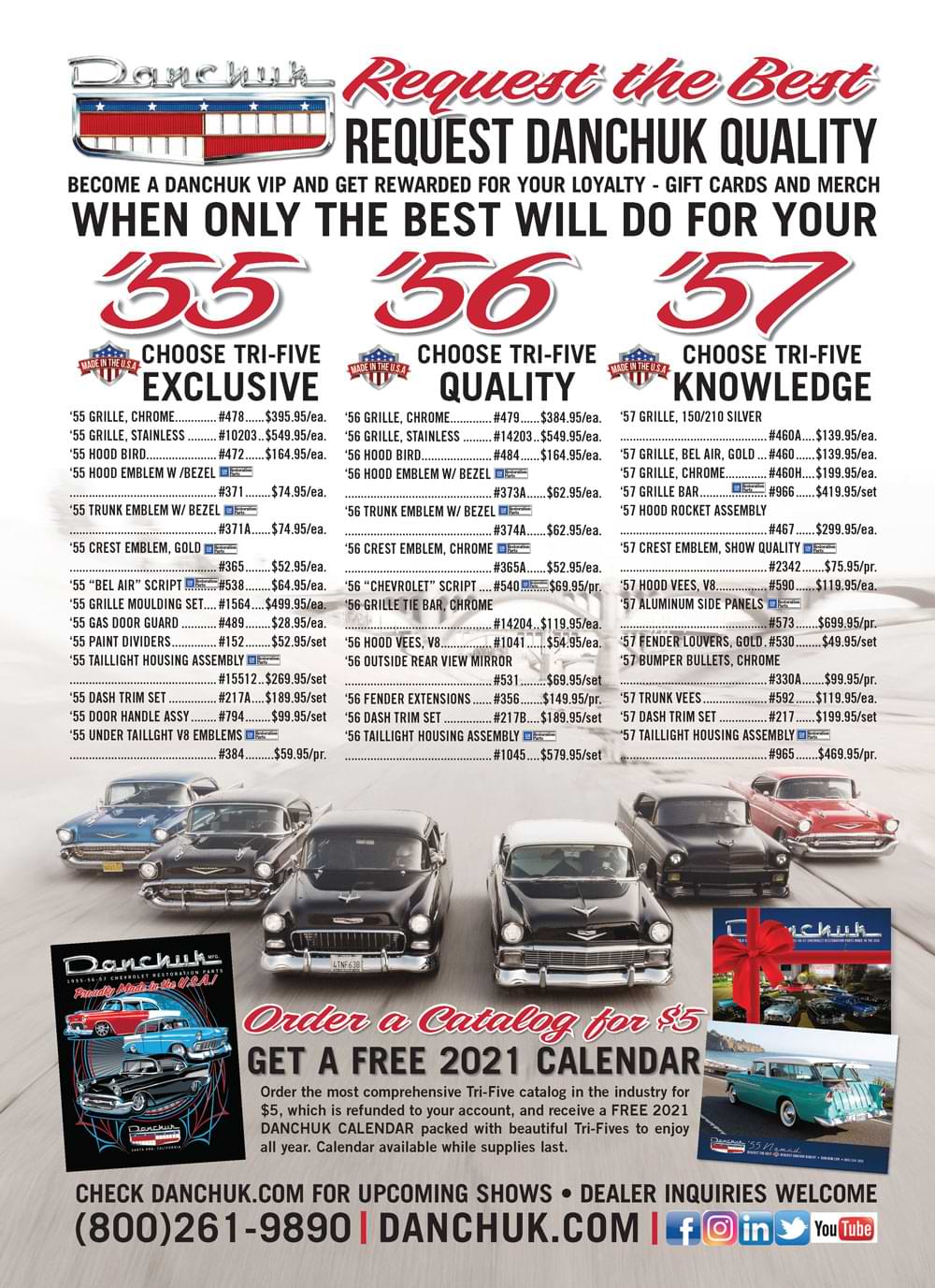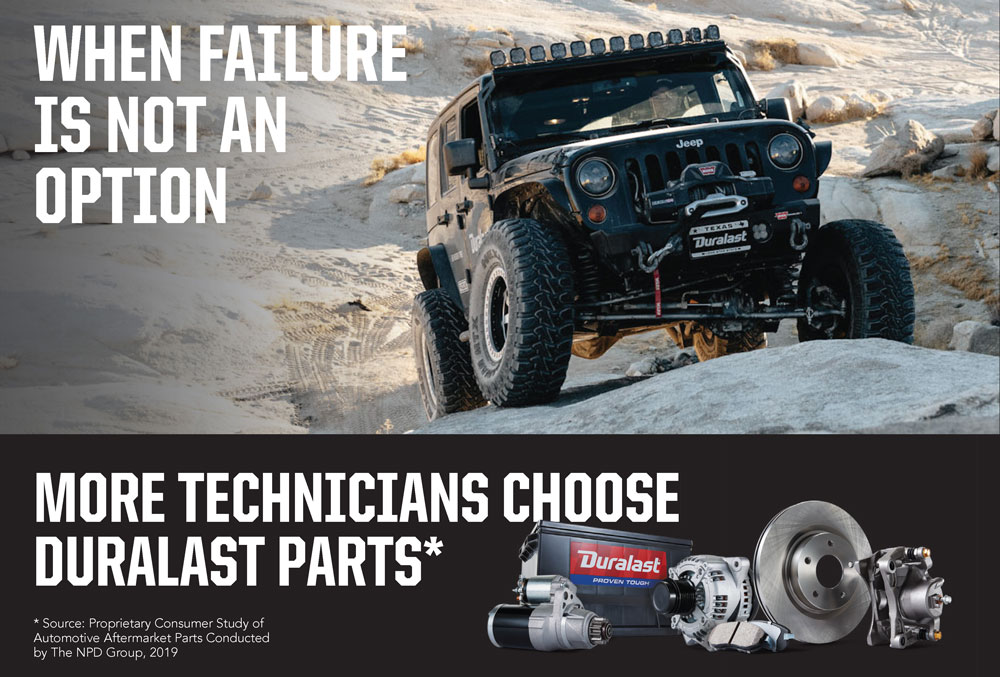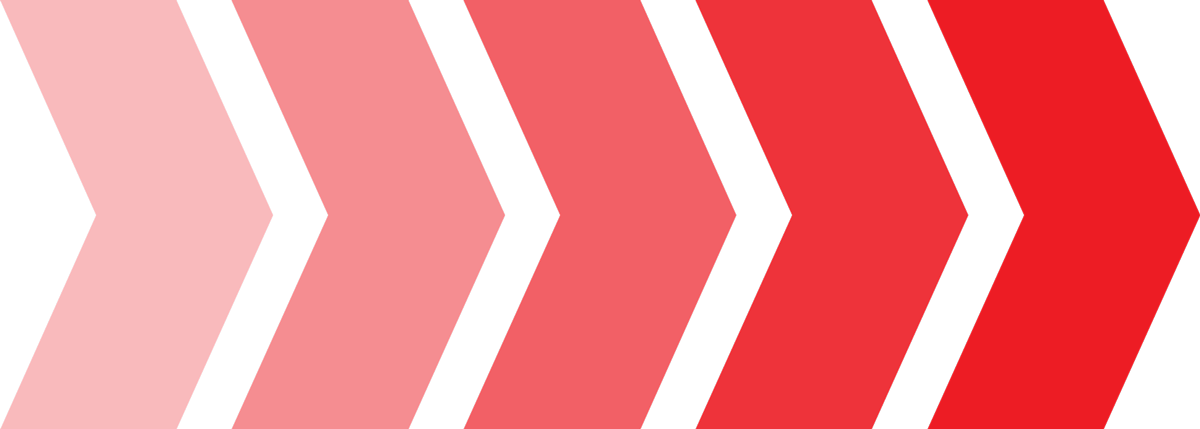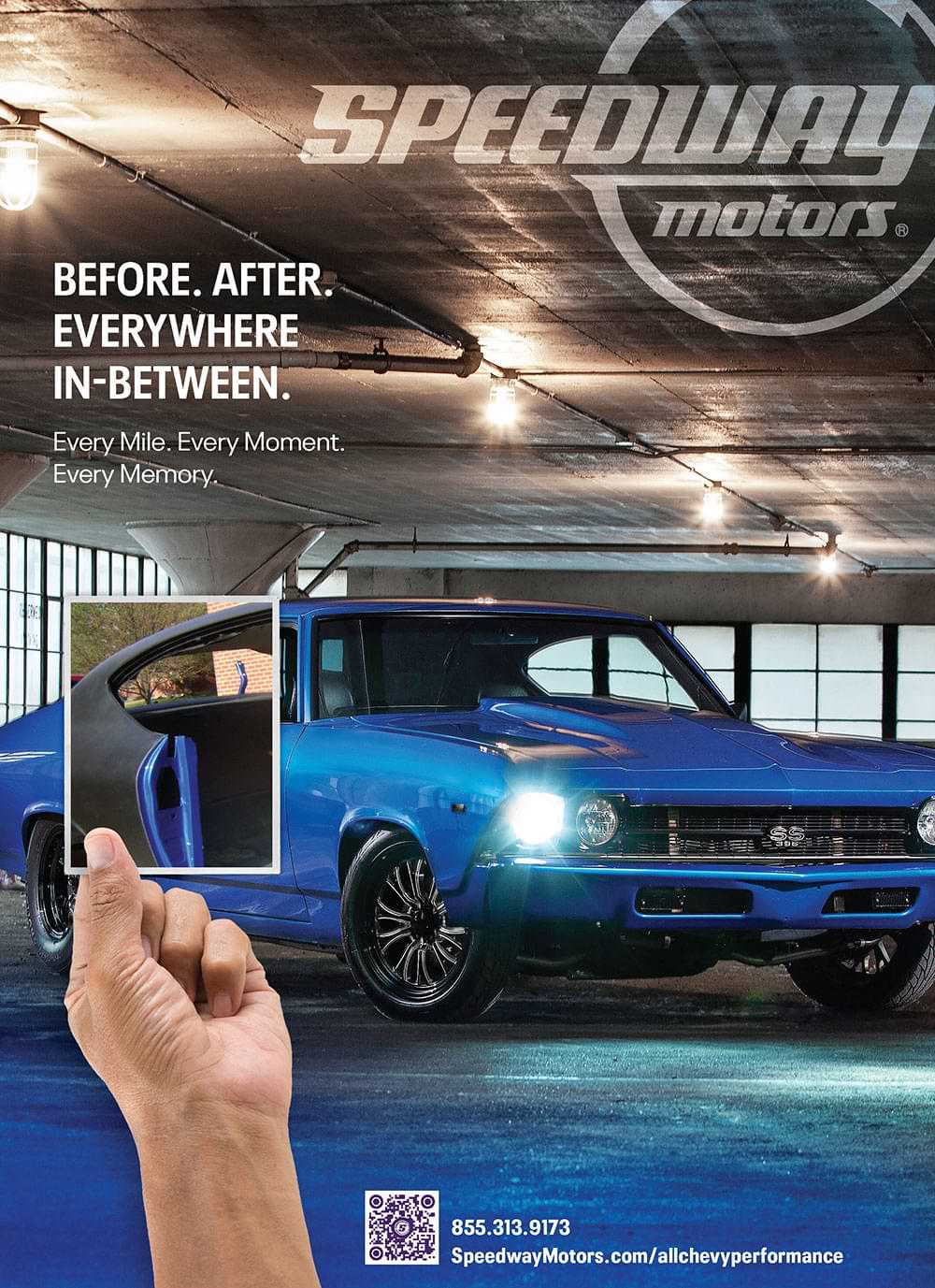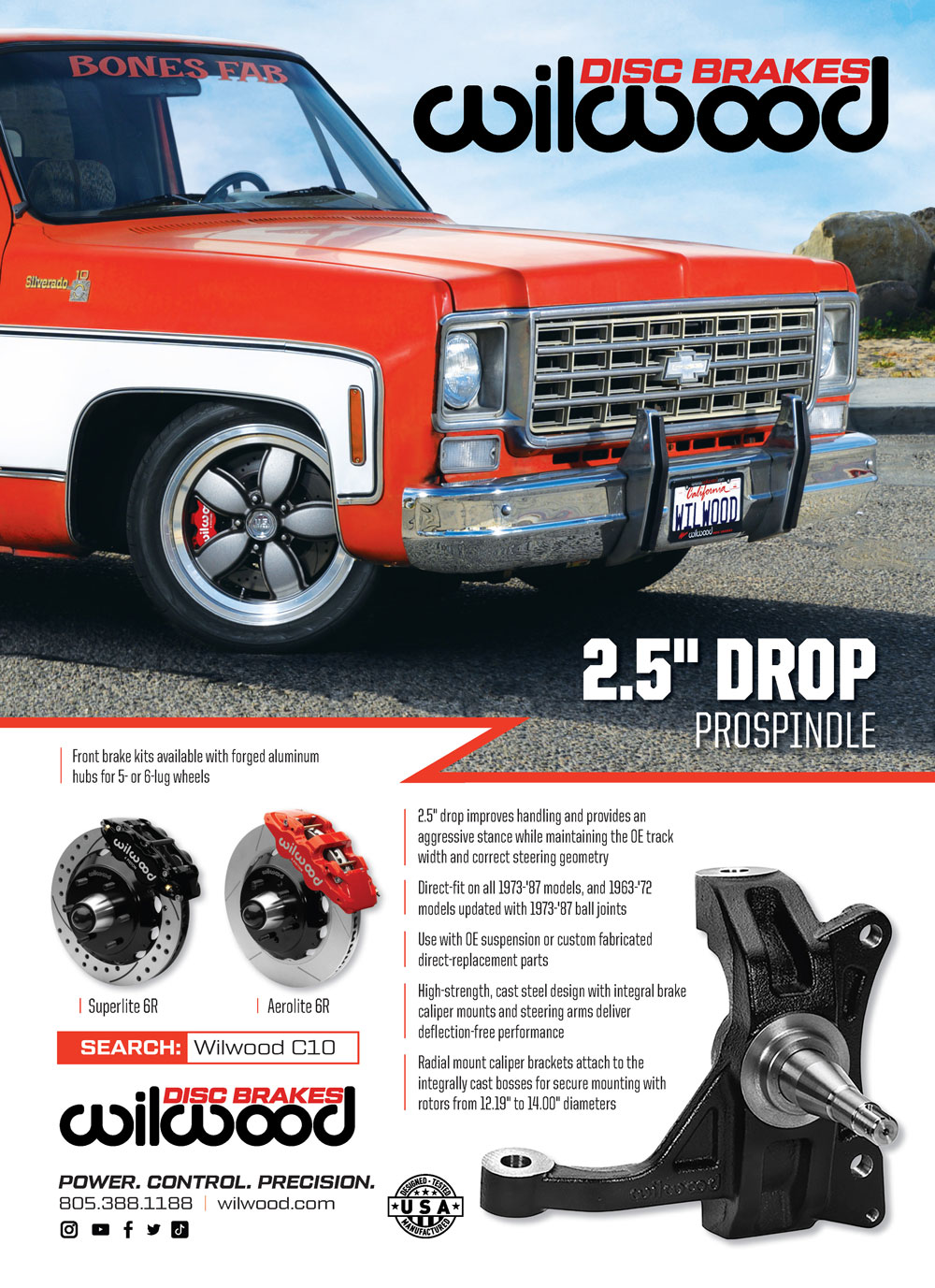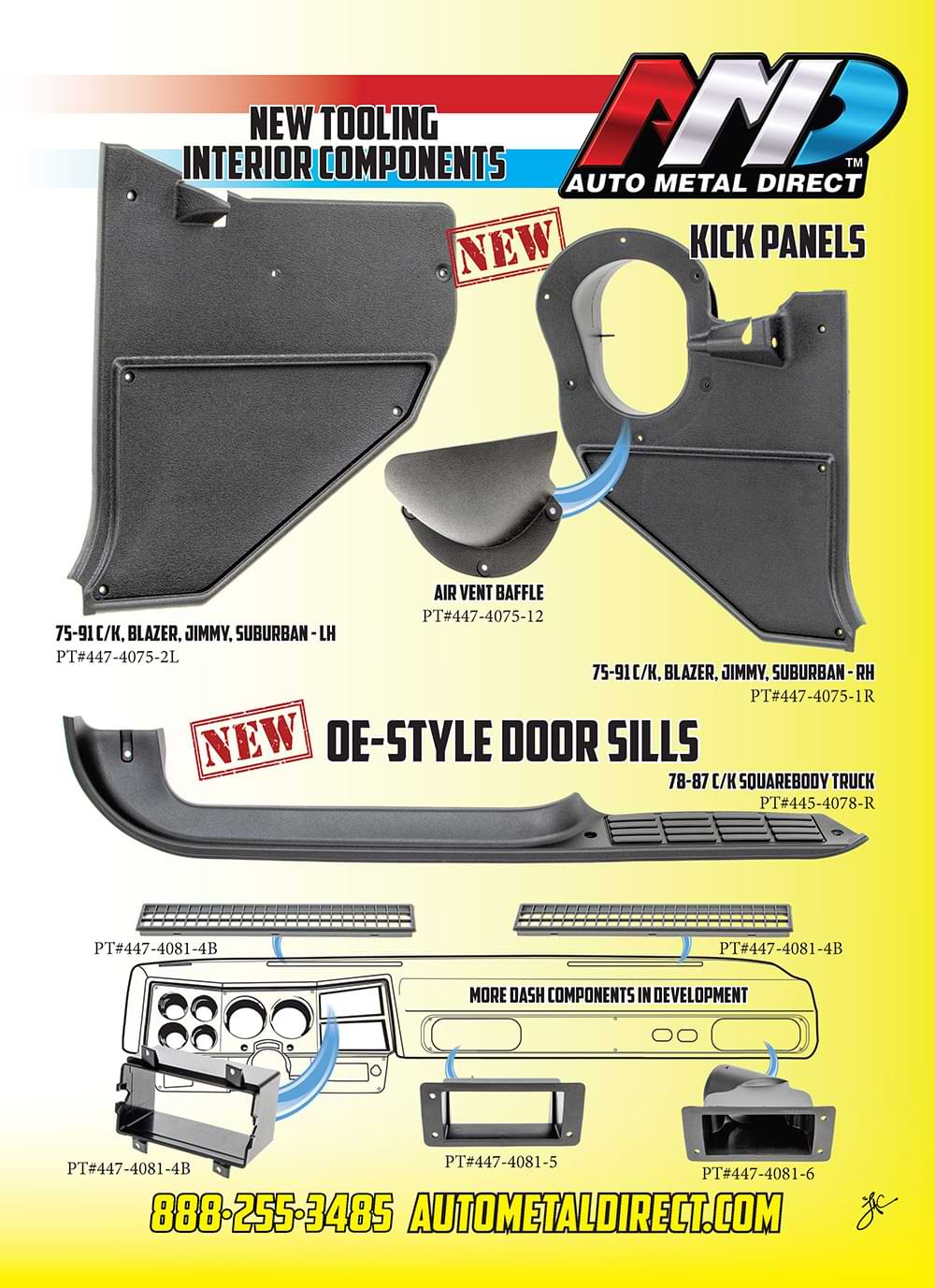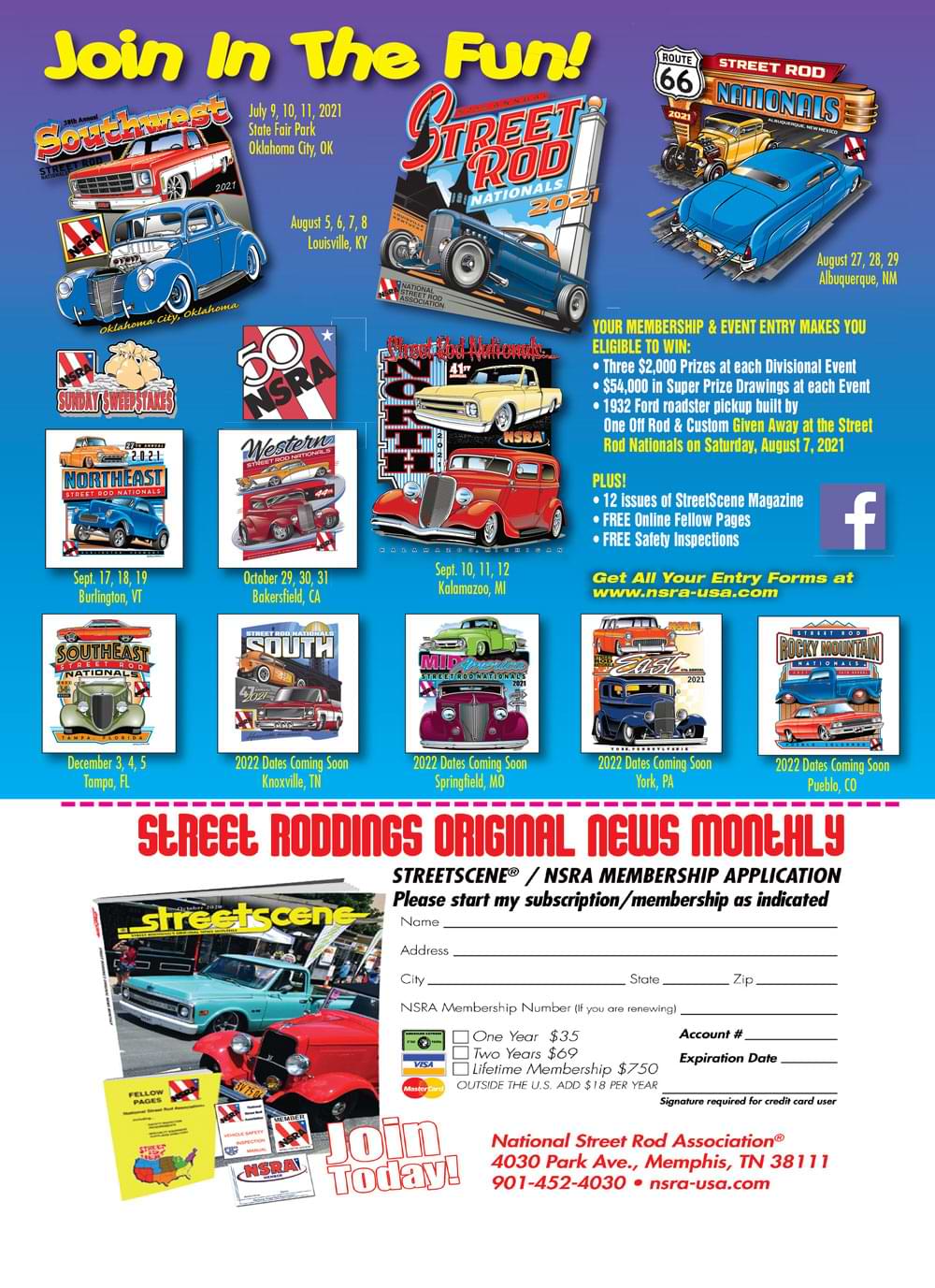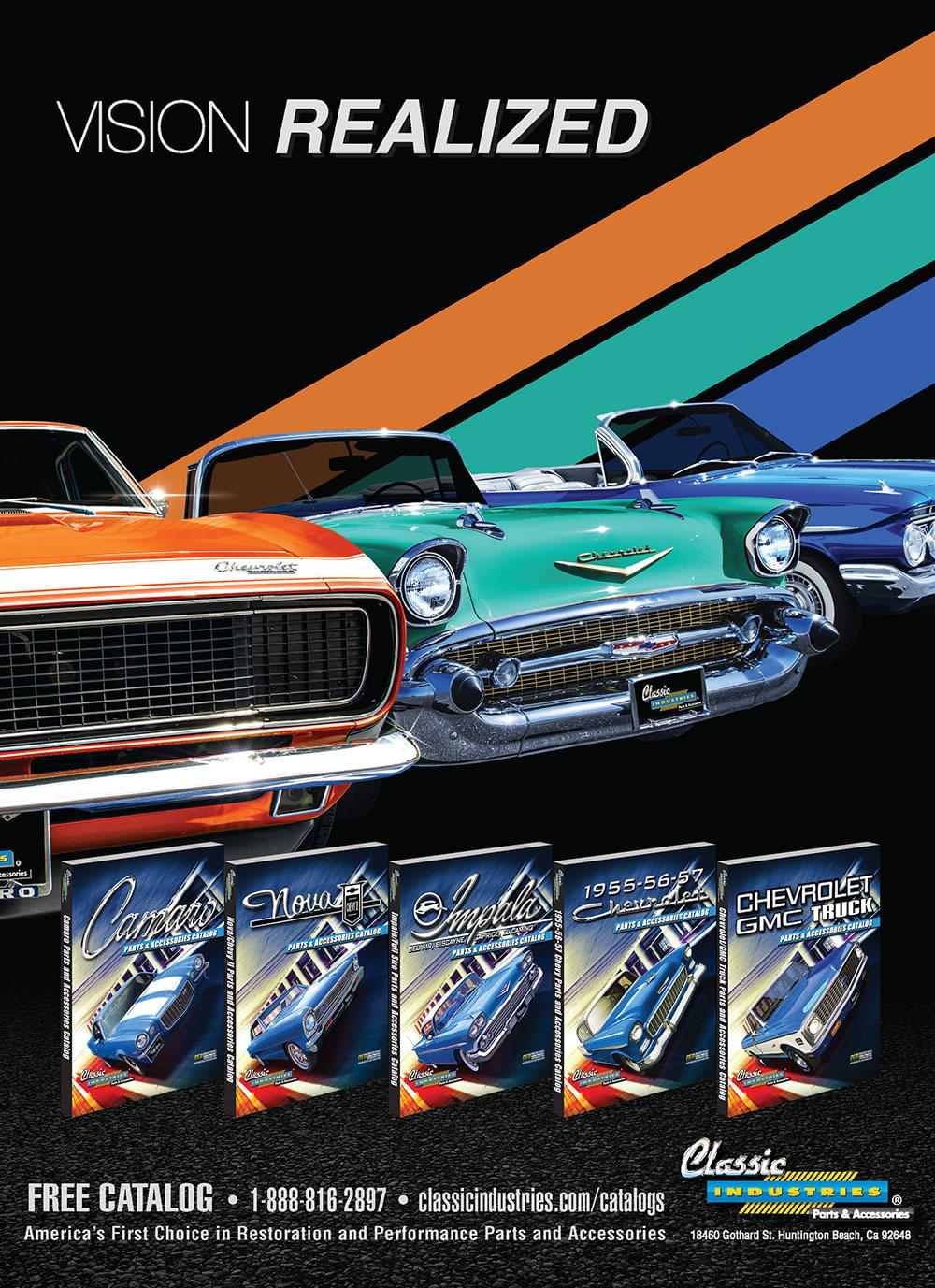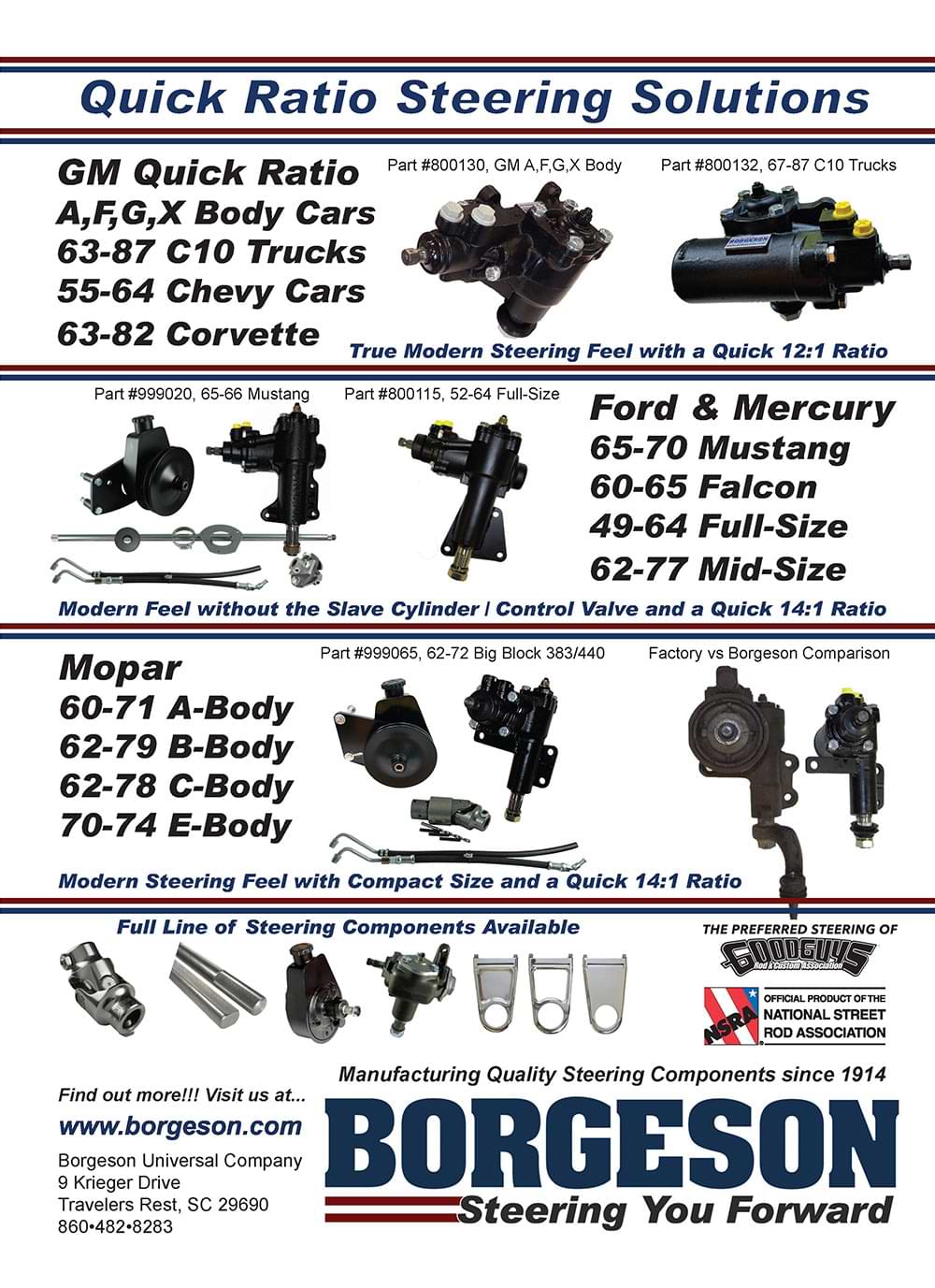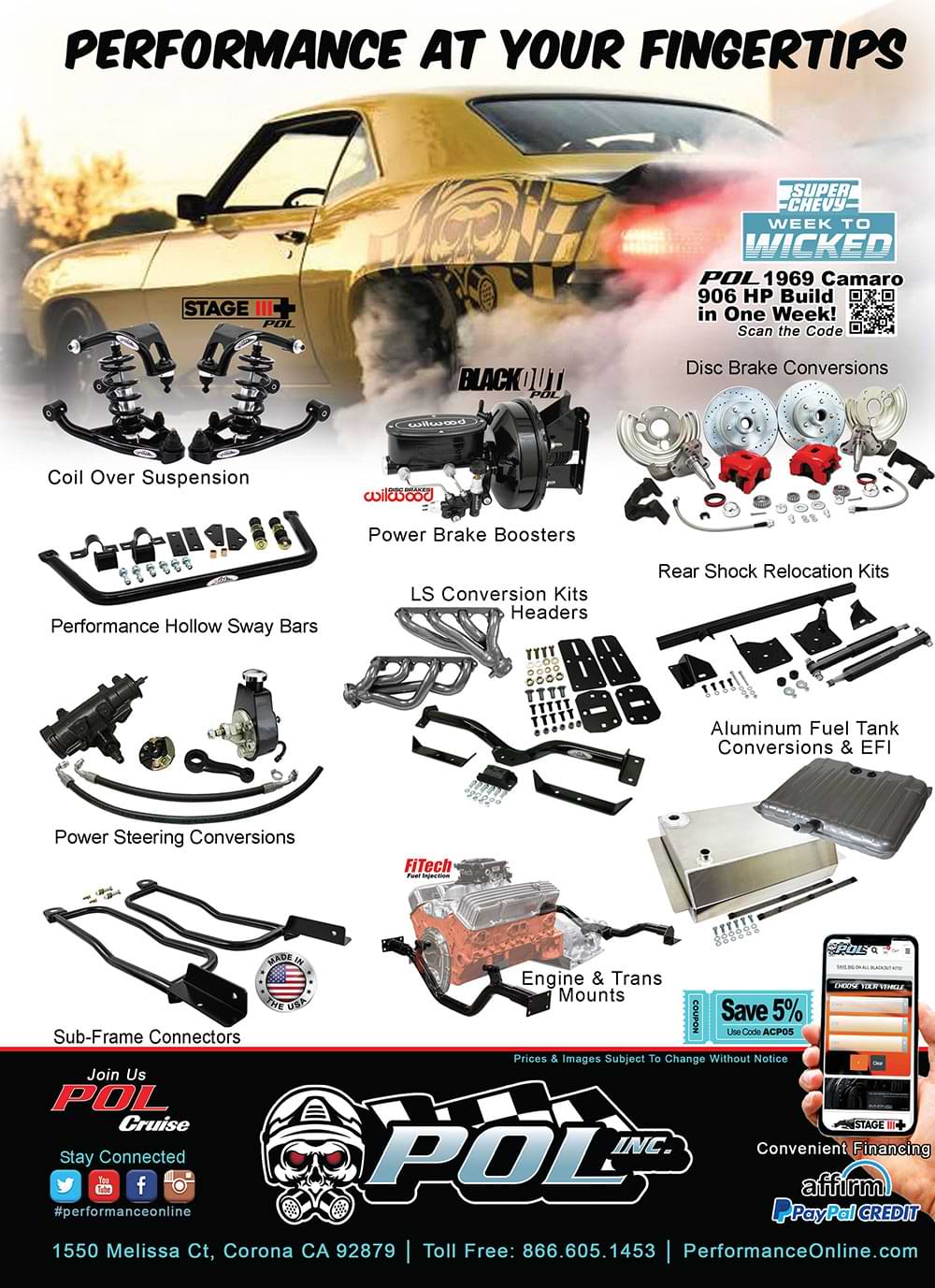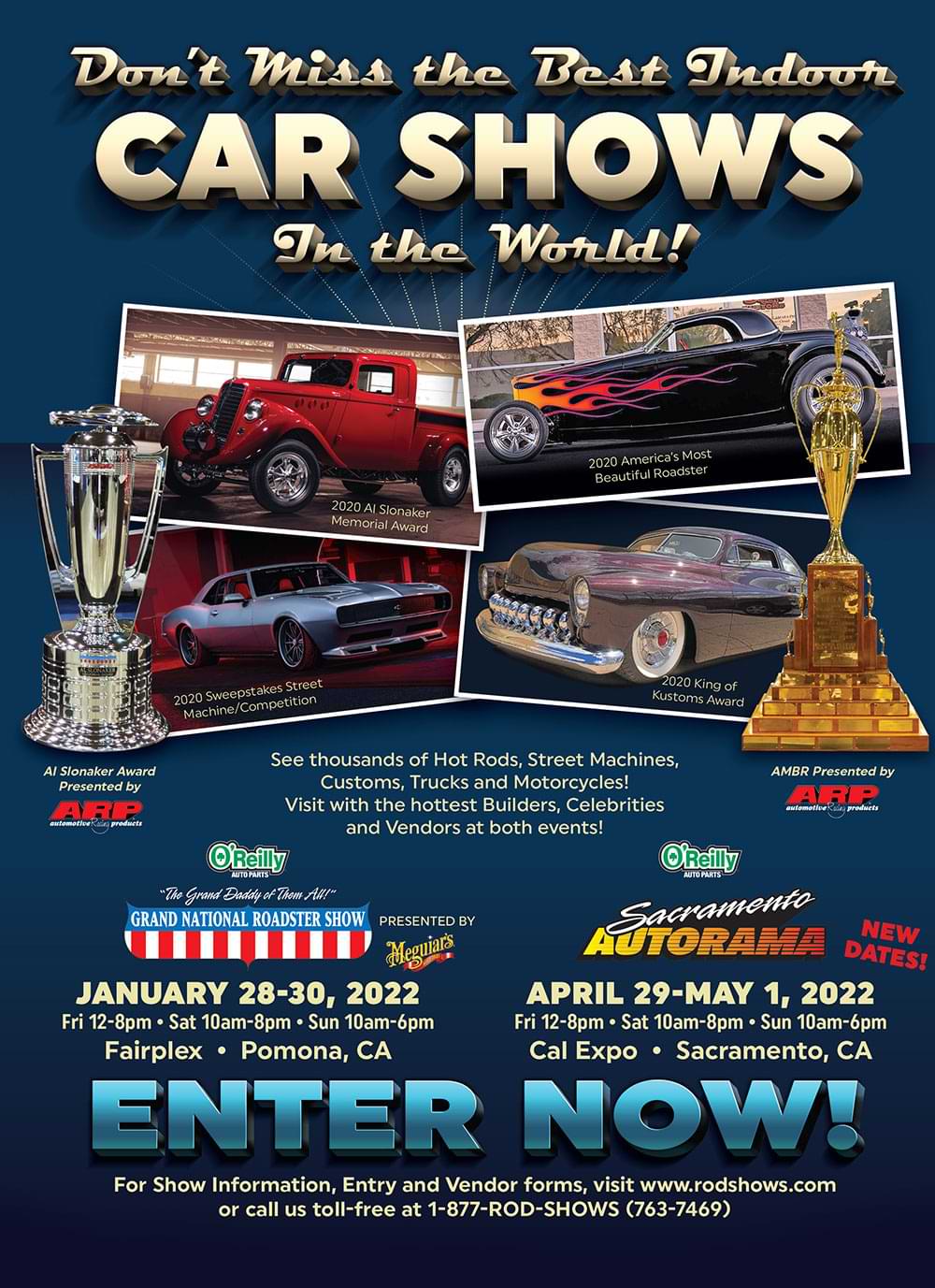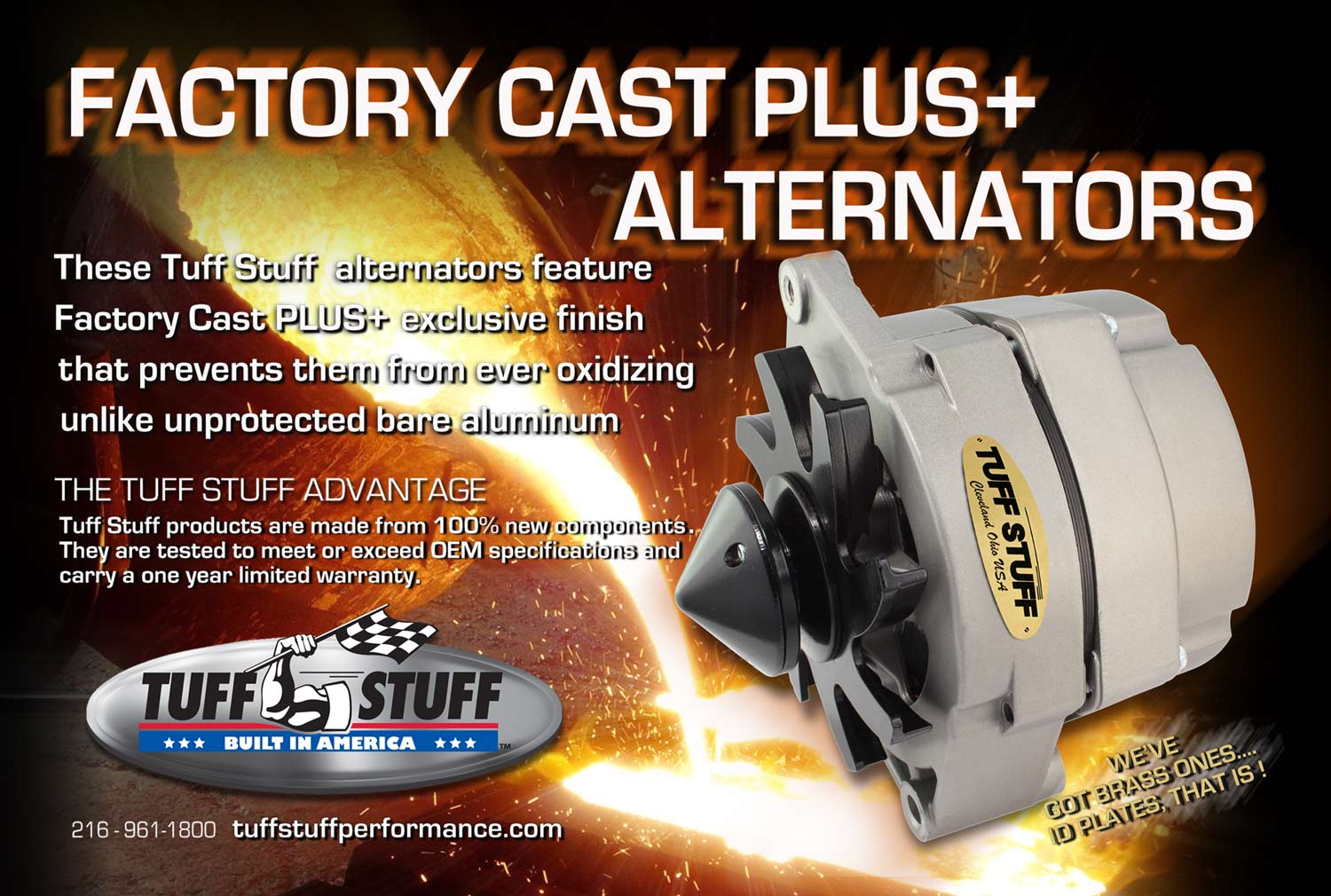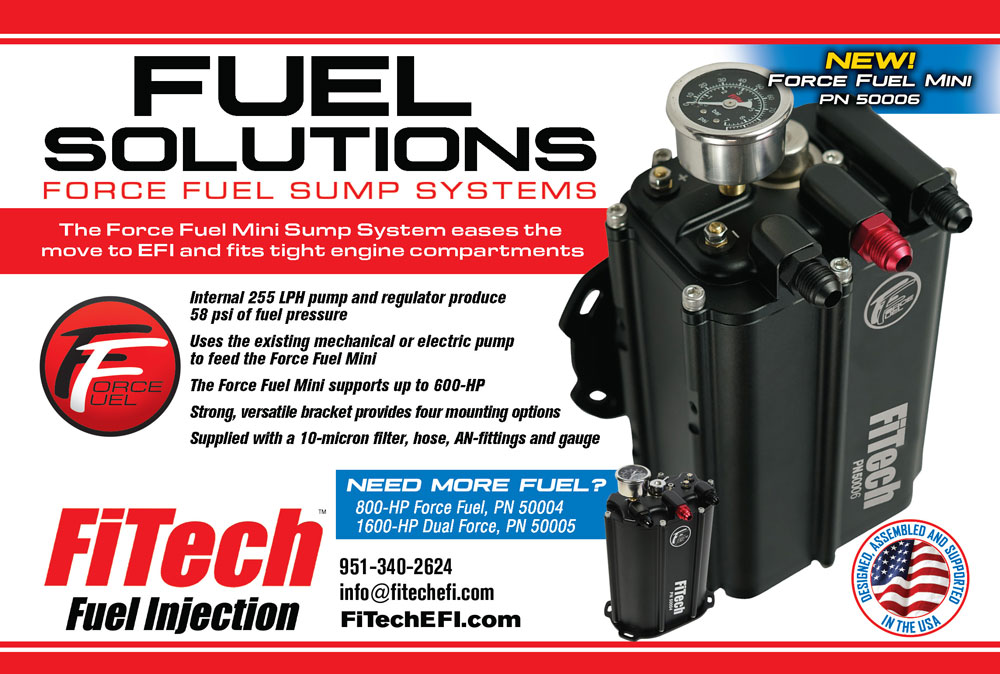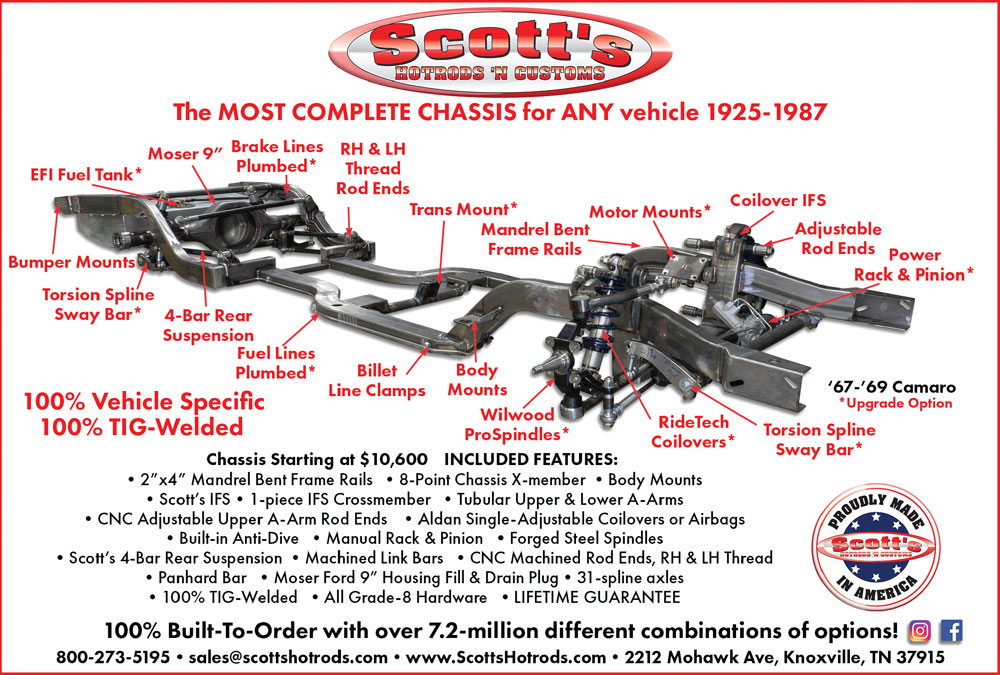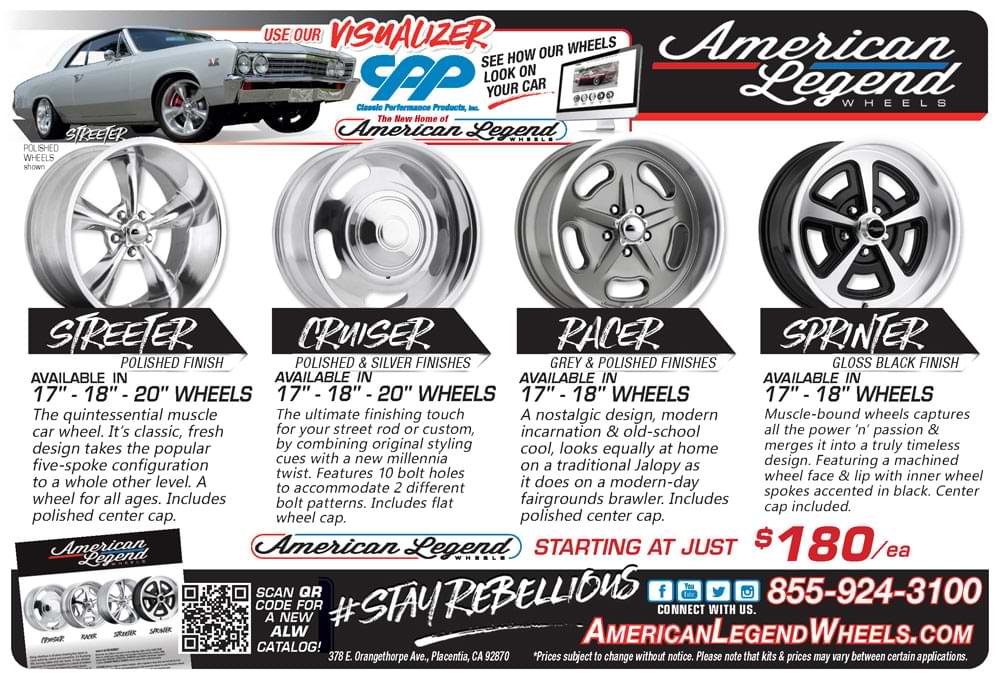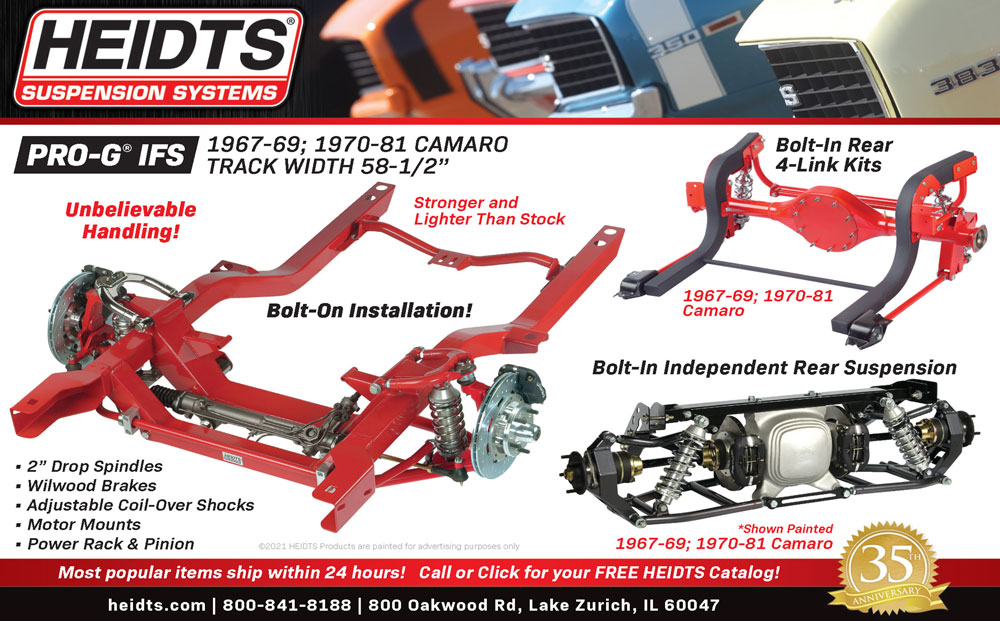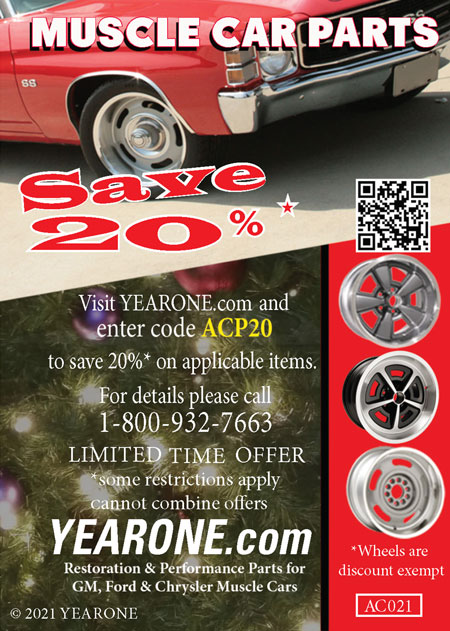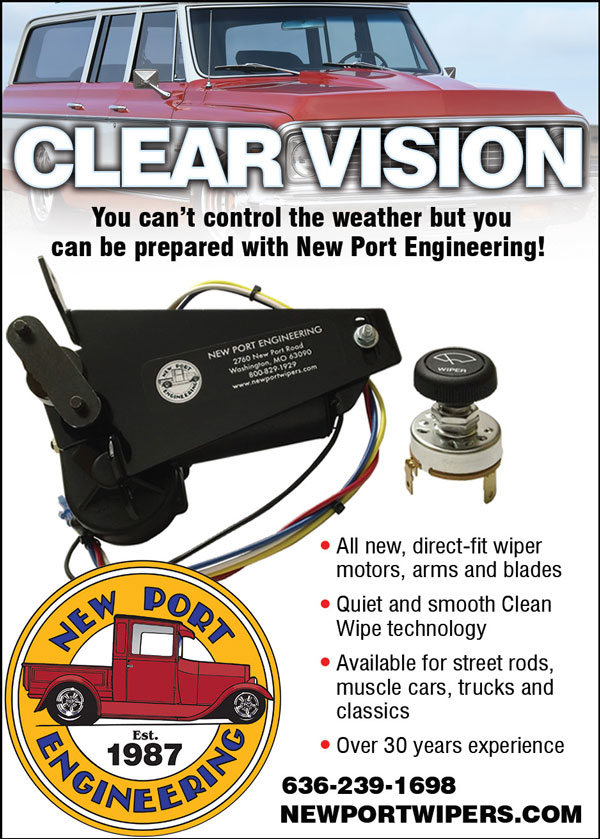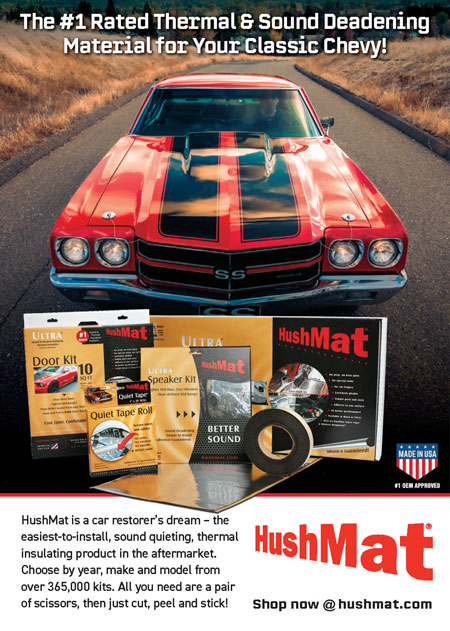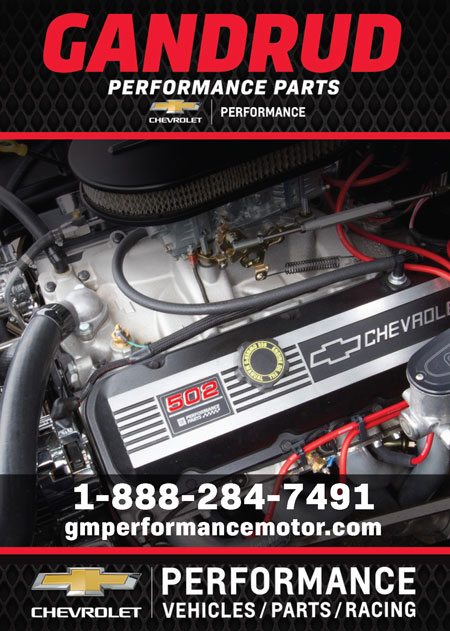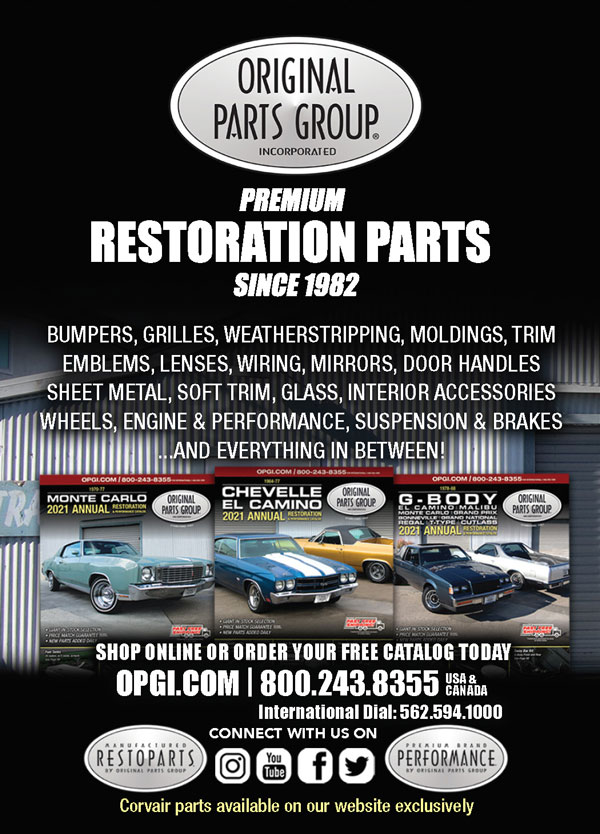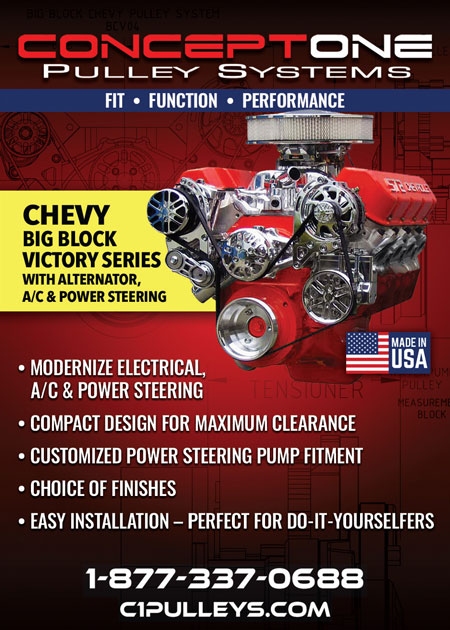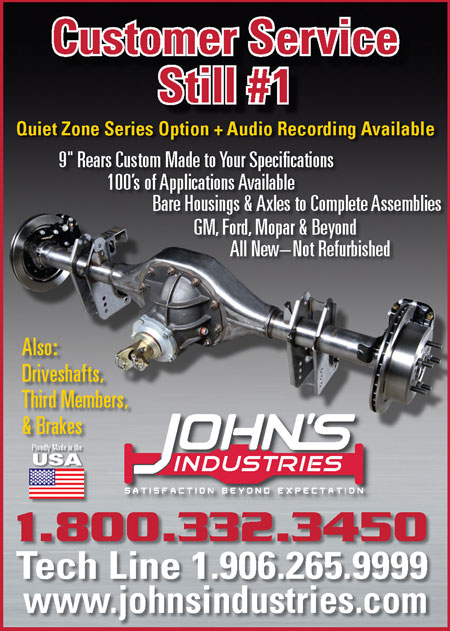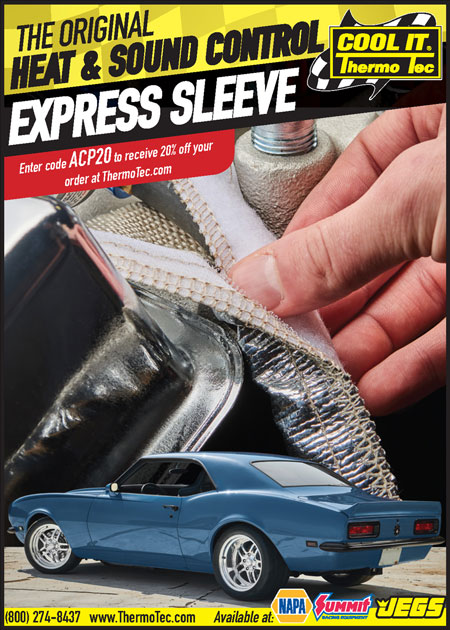Street Engines
& Steering Rebuild
Twin-turbo
Straight-Six
Twin-turbo Straight-Six
 TOC
TOC
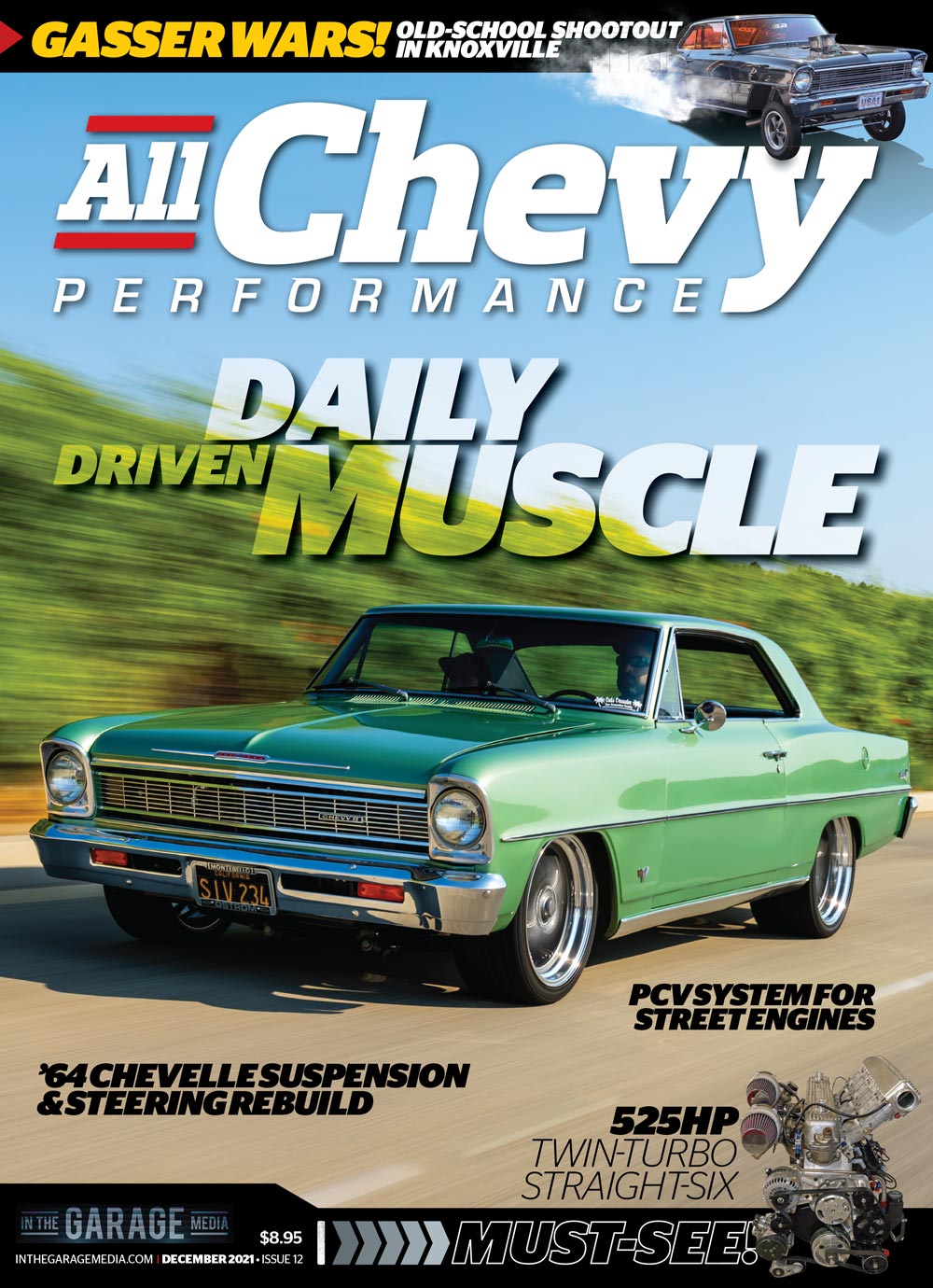



ROB MUNOZ
Wes Allison, Tommy Lee Byrd, Ron Ceridono, Grant Cox, Dominic Damato, Tavis Highlander, Jeff Huneycutt, Barry Kluczyk, Scotty Lachenauer, Jason Lubken, Steve Magnante, Ryan Manson, Jason Matthew, Josh Mishler, Evan Perkins, Richard Prince, Todd Ryden, Jason Scudellari, Jeff Smith, Tim Sutton, and Chuck Vranas – Writers and Photographers
AllChevyPerformance.com
ClassicTruckPerformance.com
ModernRodding.com
InTheGarageMedia.com
subscriptions@inthegaragemedia.com
Mark Dewey National Sales Manager
Patrick Walsh Sales Representative
Travis Weeks Sales Representative
ads@inthegaragemedia.com
inthegaragemedia.com “Online Store”
info@inthegaragemedia.com

Copyright (c) 2021 IN THE GARAGE MEDIA.
PRINTED IN U.S.A

 FIRING UP
FIRING UP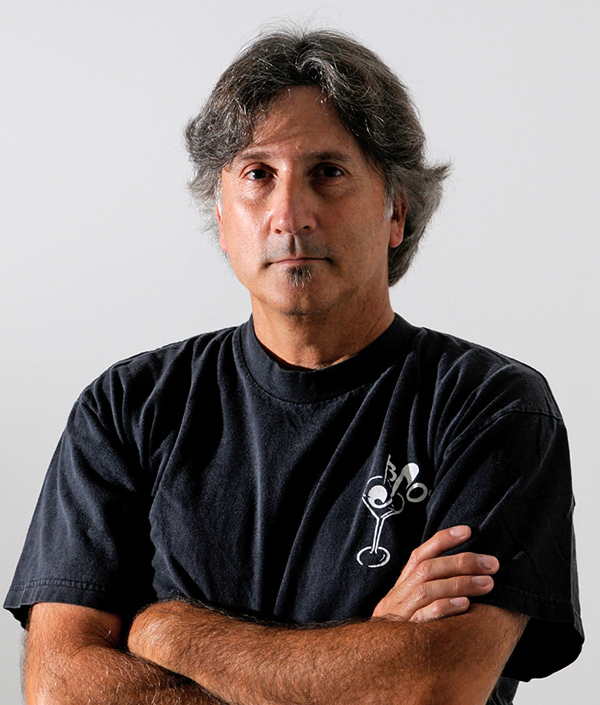

 BY NICK LICATA
BY NICK LICATAn the world of classic muscle cars there is a solid variety to choose from should you want to start a fresh build or buy one already completed. The decision on which car to build or buy, whether it be a Chevelle, Nova, Tri-Five, Camaro, or a late-’50s or ’60s fullsize car, such as a Chevy Bel Air, Impala, or Biscayne, are only limited by your personal taste, imagination, and fatness of your wallet.
So, when it comes to which vintage muscle car is most popular these days, the first-generation Camaro appears to be the number one choice. More specifically, it’s the ’69 that gets most of the attention.
So what is it that makes this car so popular? We haven’t performed a comprehensive survey or the like, but I’ll take a stab at a few reasons on what I believe makes this car so popular.
 Parts Bin
Parts Bin BY Nick Licata
BY Nick Licata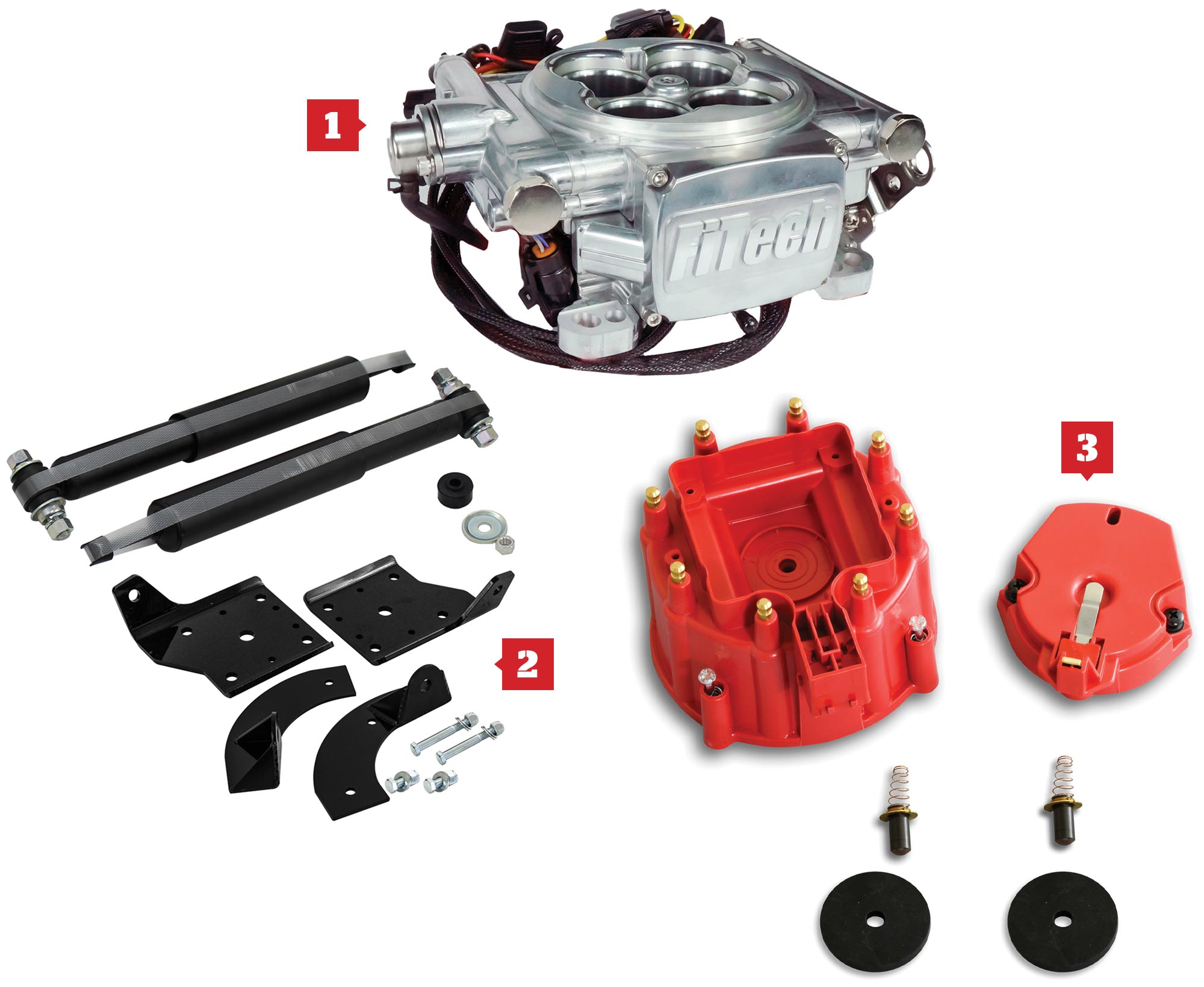

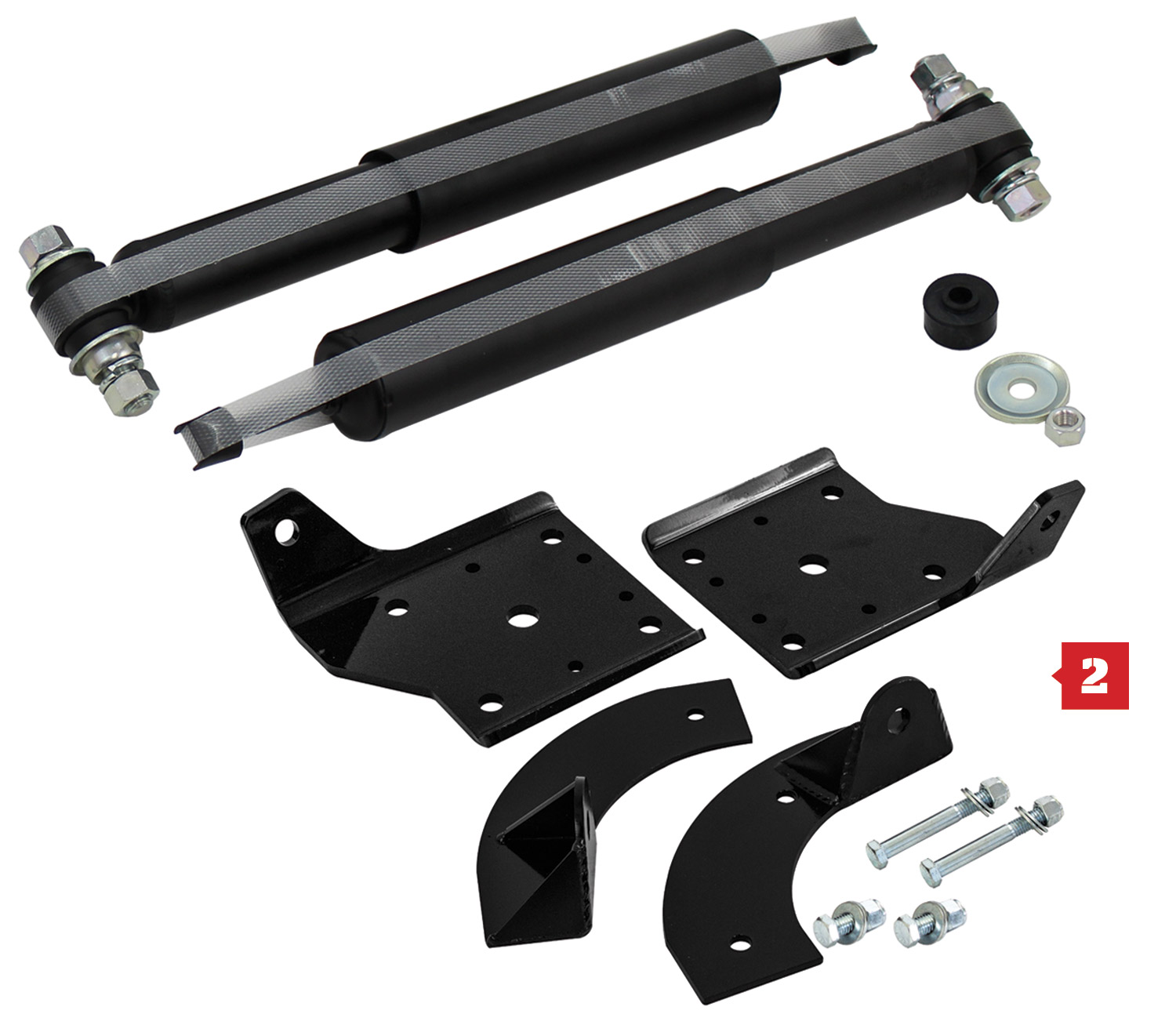
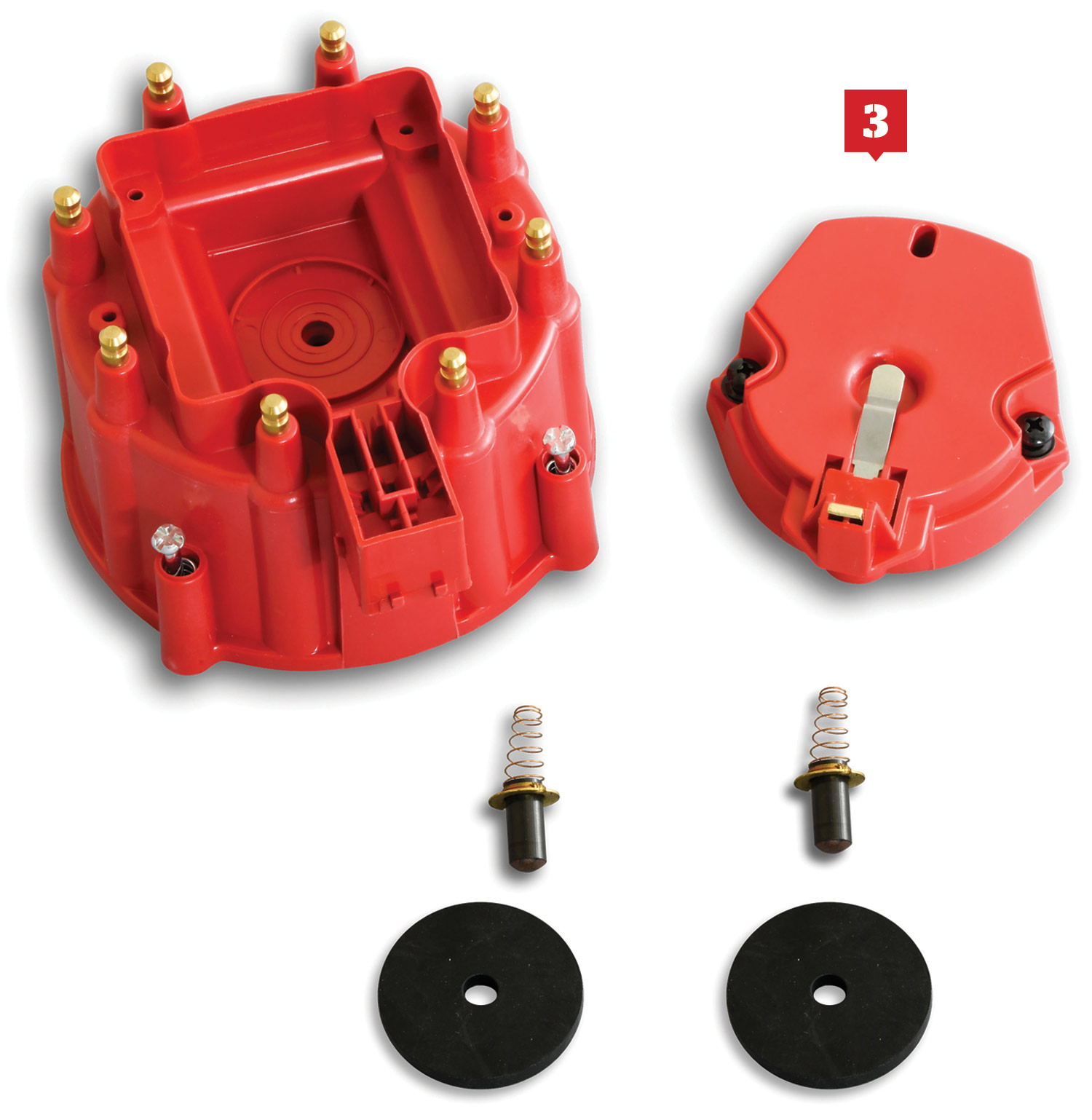
 CHEVY CONCEPTS
CHEVY CONCEPTS
 Text and Rendering by Tavis Highlander
Text and Rendering by Tavis Highlander
lthough the owner of this Nova and I went through many design concepts, the one that really stuck out to me was a mild stock car theme. The look is easy to achieve and doesn’t require deep pockets. Instead, the theme requires a bit of restraint.
Front and center are the American Racing VF503 wheels that have been powdercoated black and have a red stripe added to the outer edge. The style of the wheel looks the part but also offers modern sizing advantages over steel wheels. Up front there’s a fabricated air dam/splitter assembly to aid with downforce. An appropriate sheetmetal rear wing could round out the aero for this build. Side exit oval exhaust completes the look and helps give the build a rowdy attitude.
 FEATURE
FEATURE Photography BY Wes Allison
Photography BY Wes Allison
ony Causor is the kind of guy who, like many hot rodders, took to taking apart and modifying his Hot Wheels and other toy cars at a young age. Once Tony got old enough, he began getting his hands dirty helping out working on his dad’s cars. “Growing up, I remember helping my dad work on his cars in the garage,” Tony reminisces. “The knowledge I gained from my dad eventually led to me working on my own cars.”
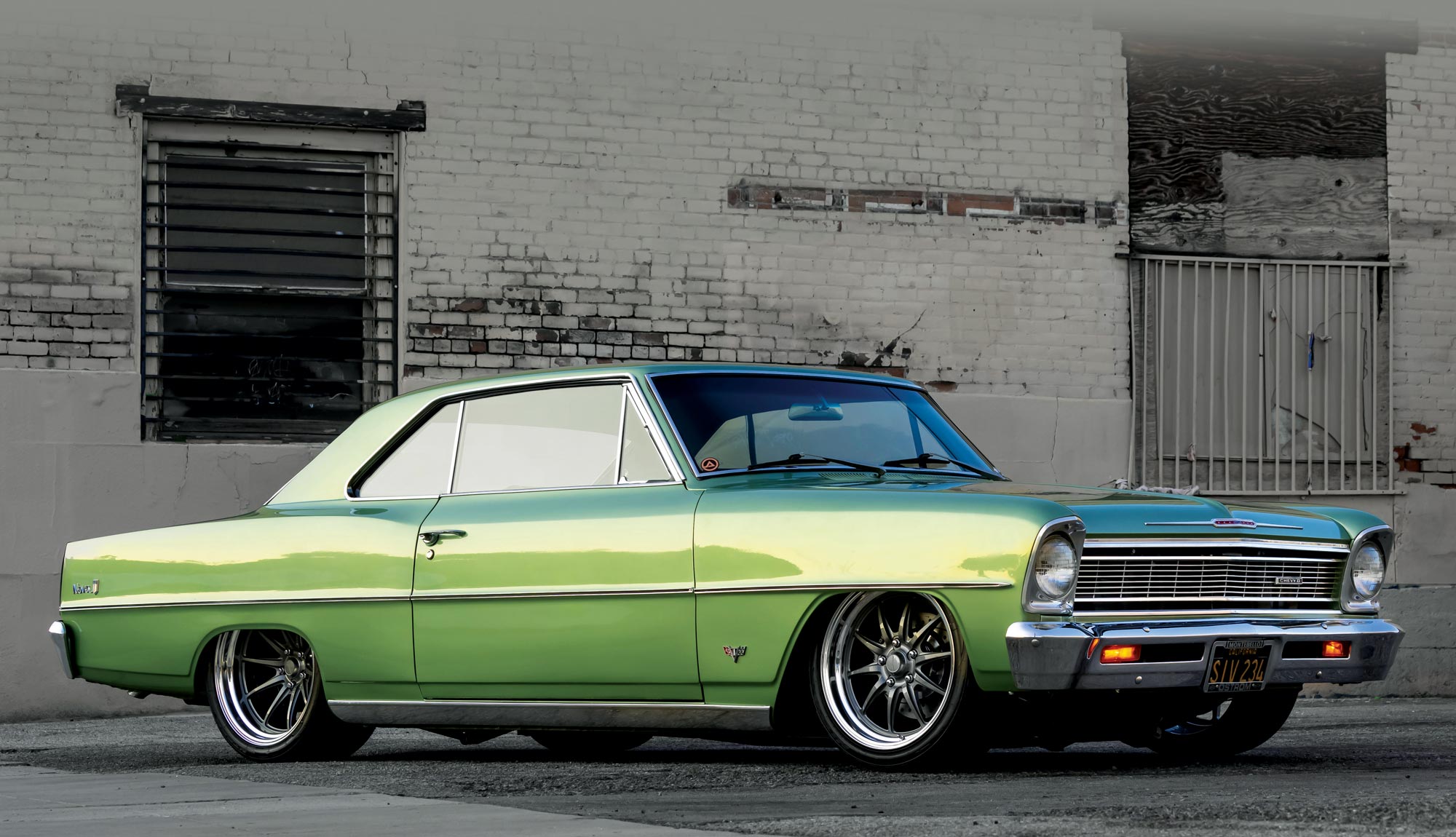
 TECH
TECH
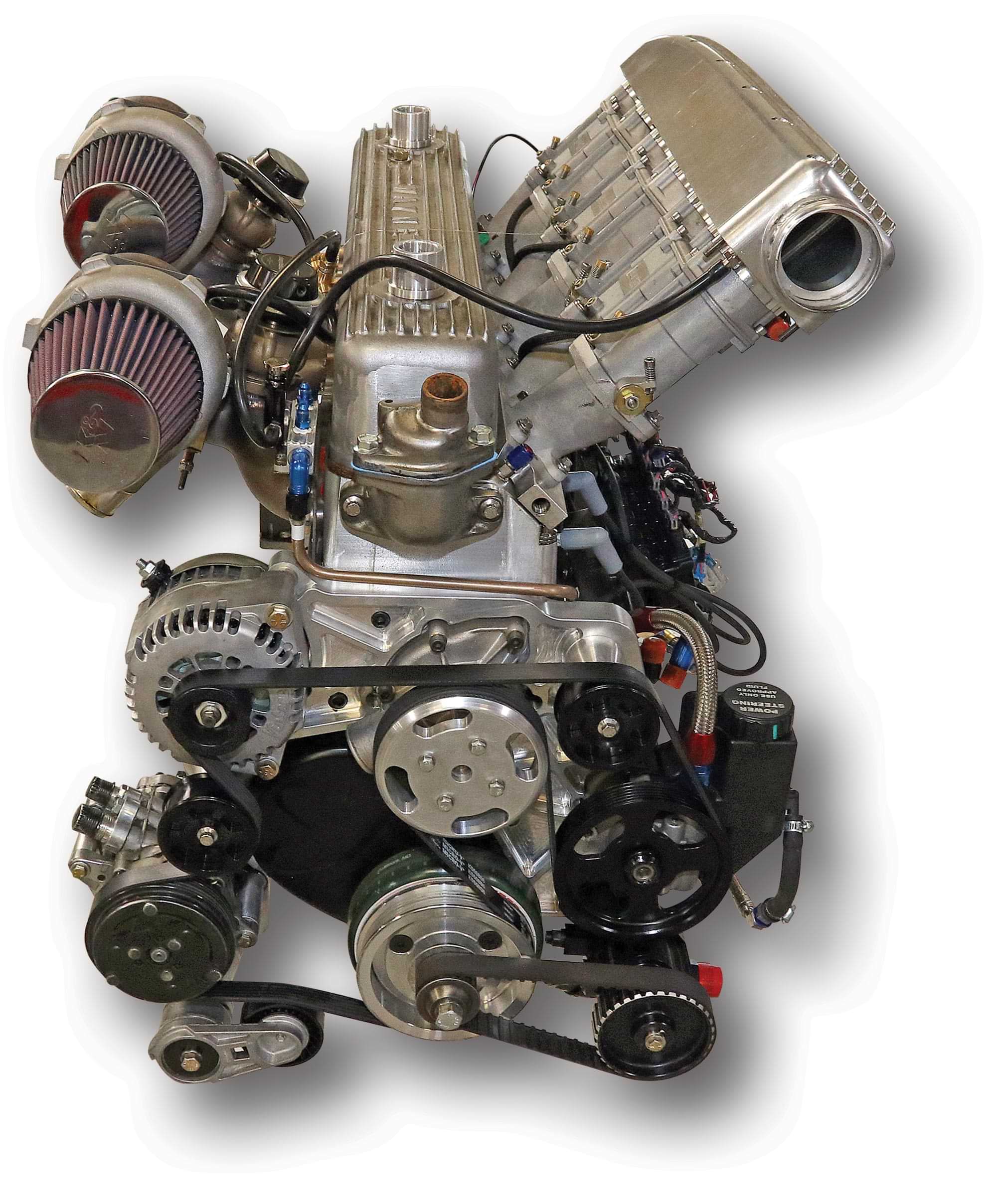
 Photography by The Author
Photography by The Authorow many times have you been searching Craigslist or walking the aisles in a junkyard and find what might just be the perfect score only to raise the hood and be disappointed to find a pedestrian straight-six.
Of course, over the decades, Chevrolet put a lot more sixes in vehicles than they did their much sexier V-8s. The straight-six was Chevrolet’s main engine when it was introduced in 1929, going into almost everything all the way up to the V-8’s introduction in 1954. And even after the V-8 came around, the straight-six was the base engine for practically every model. Incredibly, the straight-six was still being produced in Brazil as recently as 1988.
So, given all that history, it is pretty darn cool that somebody is finally giving the straight-six its due. Johnson’s Hot Rod Shop in Gadsden, Alabama, builds some of the coolest pieces of fuel-burning art on four wheels. They’ve built some of the most famous hot rods ever made, including a Ridler Award winner and a Goodguys Street Machine of the Year.
 FEATURE
FEATURE Photography by The Author
Photography by The Author
atrina Updike has always had a soft spot for first-gen Camaros. As she quickly points out, “I’ve always wanted a Camaro, and the ’69 is my favorite because it was the year I was born.” That longstanding desire to own one was a bucket list item, but as any hard-core Chevy person will tell you, ’69 Camaros in decent shape have become increasingly hard to find–and expensive. As is often the case, being in the right place at the right time, or knowing the right person, goes a long way to finding what you lust after. In Katrina’s case it was a matter of knowing the right person and playing the long game, which in her case was about 10 years.
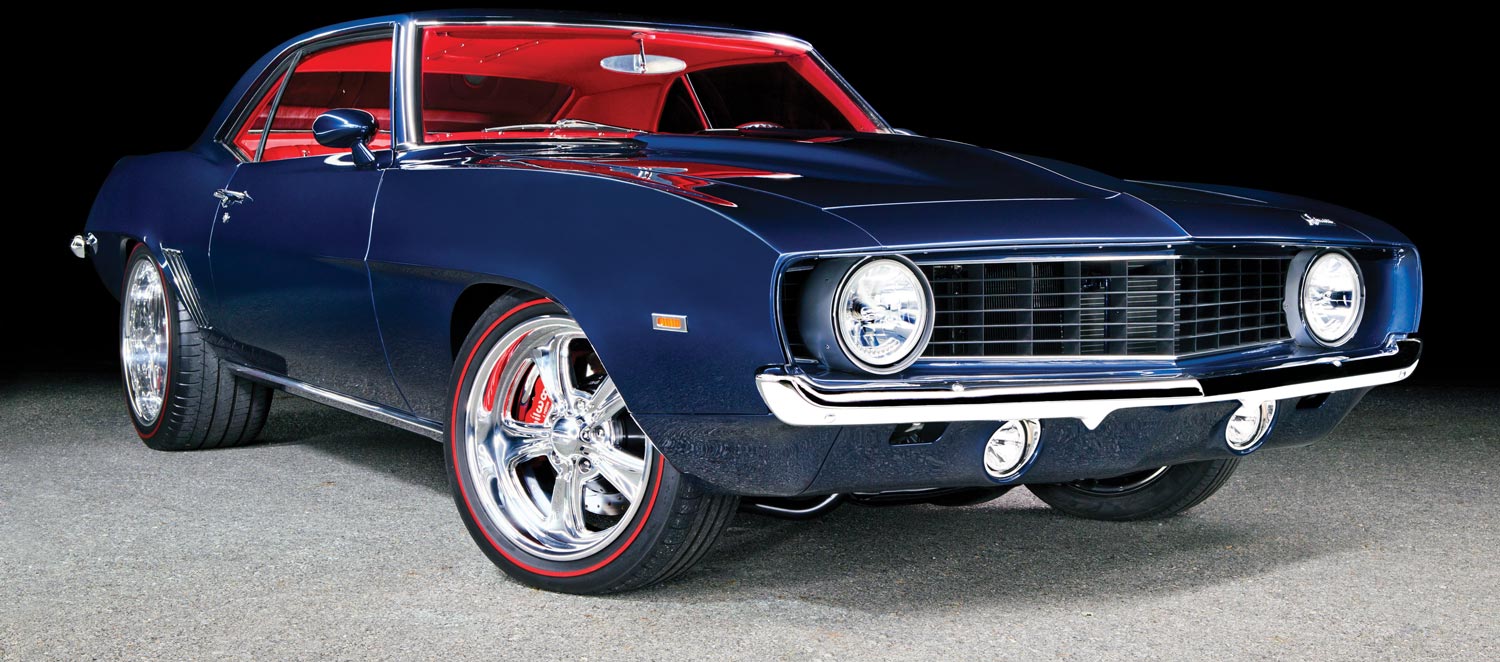
 TECH
TECH
 Photography by the Author
Photography by the Authore were wrapping up an oil change on our ’64 Chevelle not long ago and noticed a little top-to-bottom movement in the front wheels, which we took as the wheel bearings needing adjustment. After re-packing the bearings and setting the preload on the bearings the play was still there. Upon closer inspection, we noticed that the original ball joints were the cause of the excessive movement. Updating the front suspension had been on our “eventual” upgrade list for a while, but this finding moved it a little higher in the queue.
There are no shortage of performance suspension components available for Chevelles, including tubular control arms with improved geometry or versions to accept coilovers, but this old Malibu is your basic cruiser and is going to stay a basic cruiser. We’re talking gen-one small-block, a “one-wheel-peel” 10-bolt with 15-inch rallys wrapped in BFGoodrich radials.
To keep with our basic theme, we decided a stock rebuild of the front suspension was in order and surfed over to classicperform.com to see what Classic Performance Products (CPP) offered for a rebuild. They’re known for their performance coilover swap kits and cool tubular control arms, but they also offer stock replacement ball joints and control arm bushings as well as new stamped steel control arms just like the originals. If you plan to rebuild your stock control arms, you can upgrade from rubber bushings to CPP’s PolyPlus line of polyurethane bushings. Rubber is known for a smoother ride yet polyurethane improves the handling, road feel, and will last longer.
 FEATURE
FEATURE Photography by John Jackson
Photography by John Jackson
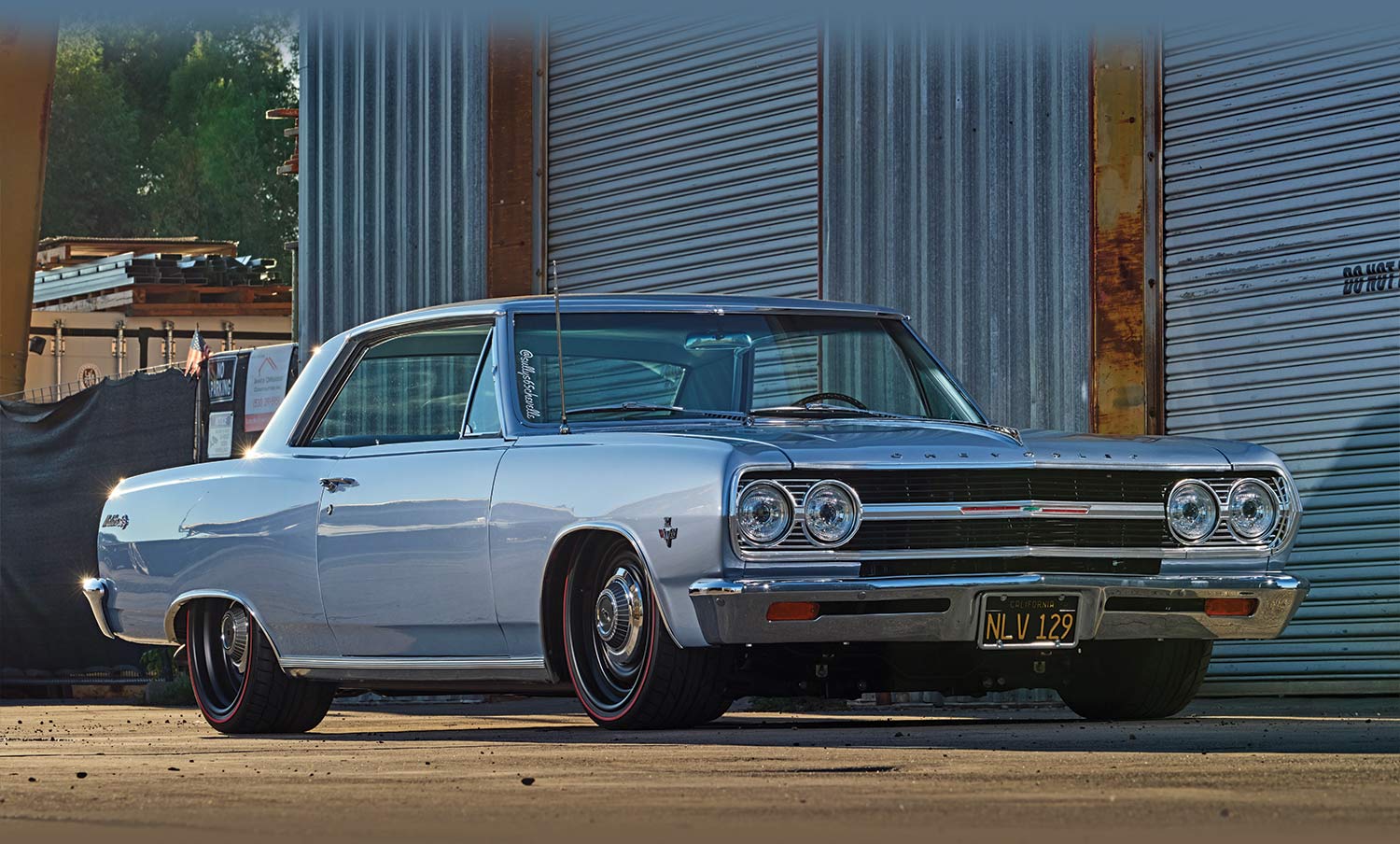
entors come in various types of relationships, whether it’s a friend, an acquaintance, a big brother, or someone closer. “My dad, Jim Sullivan, got me interested in cars at a very young age,” Sean (Sully) Sullivan explains. “I went to car shows with him for as long as I can remember. Building cars came later when my dad bought me a ’67 Camaro for my eighth grade graduation to work on until I got my driver’s license.”
That Camaro was the catalyst to more builds of assorted brands over the years, but Sean always had a hankerin’ for an early Chevelle. “I really liked the looks of the square-body ’64 and ’65 Chevelle,” Sean states. “When I met Pat, the previous owner of this ’65 Chevelle, I’d contact him every month or so to see if he was ready to sell it. Of course, the answer was always ‘no,’ and at one point he stopped responding. Worried he had sold the Chevelle, without my knowledge, Jennifer, my wife had contacted him and purchased the car and then gave it to me for my 40th birthday. Talk about a cool birthday present. That was the best gift ever.”
With the car finally in Sean’s hands, he upgraded it right away with an LS3, TREMEC TKO 600, and bolted up a Ridetech air-ride suspension to the stock chassis. After several years in that configuration it was time to build it to version 2.0, if you will. It was already a nice car, but Sean had new ideas to bring onboard to the Chevelle. Having done so many builds with his dad, when he died Sean took to building cars solo. “My garage is too small for the type of work I wanted to do on this car,” Sean explains. “So, I contacted my buddy, Derek Carlson, owner of The Hot Rod Shop in Rancho Cordova [California], to see if he’d help me with the rebuild and use his shop. He understood the direction I wanted to go and he was excited to get involved. Besides, it was nice for me to get back to working on a project with someone else.”
 TECH
TECHit’s Important
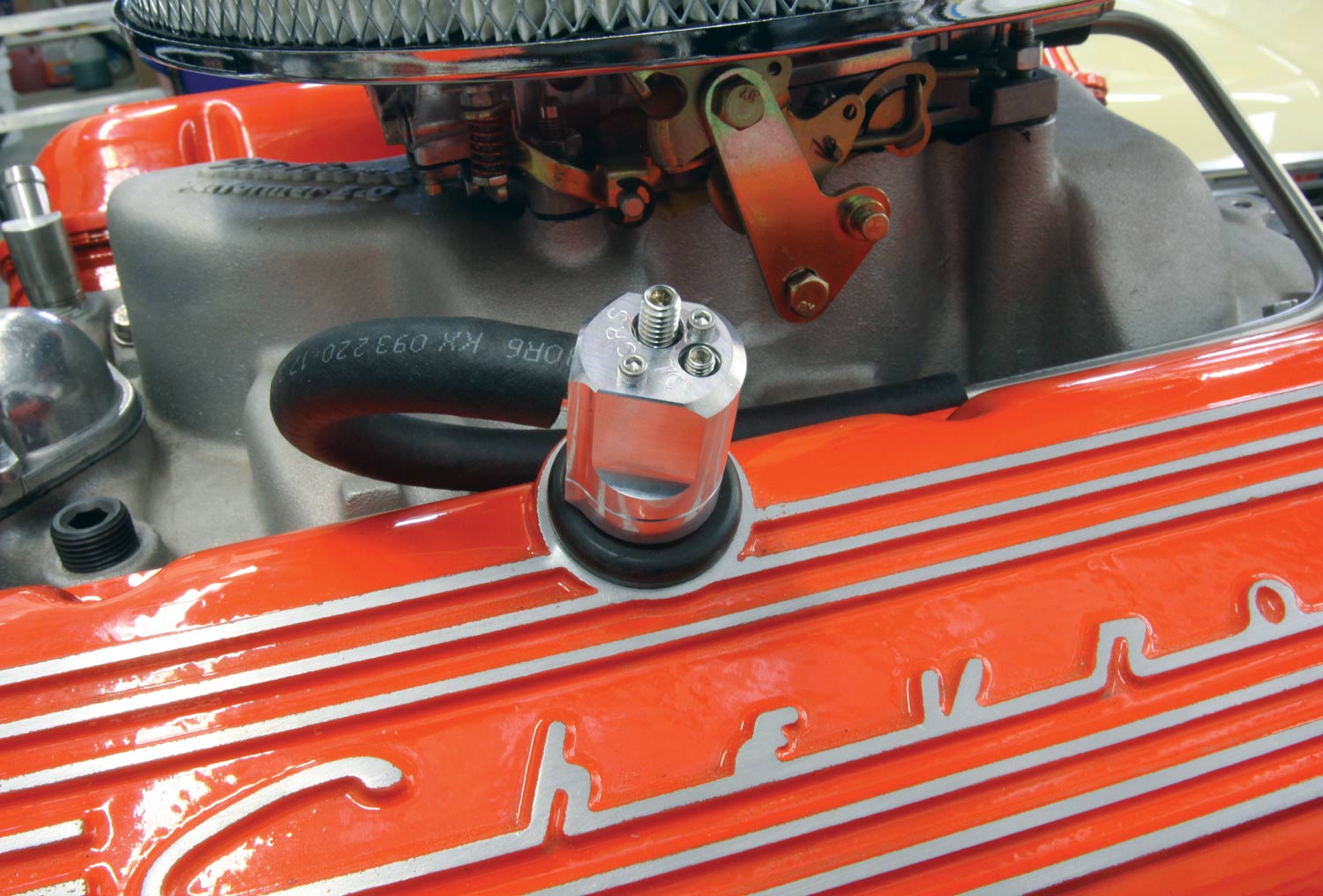
 Photography by The Author
Photography by The Authorositive Crankcase Ventilation (PCV) can easily qualify as the least interesting aspect of a gearhead’s inventory of hot rod romance parts. Many people think that this system’s only benefit is to keep oil vapors from escaping valve cover vents that create that annoying oil mist that coats your engine and permeates into the passenger compartment.
Let’s start with how a PCV valve system functions. All internal combustion engines create crankcase pressure–generally referred to as blow-by. This is formed when cylinder pressure leaks past the rings and forms a mist of oil in the crankcase. This pressure must be ventilated or the buildup will very quickly push out valve cover or pan gaskets and force oil past the front and rear main seals. All of which is annoying, leading to a never-ending task of cleaning the engine bay. Just ask the guys with rags tied around their valve cover breathers.
Before 1962 production cars employed a road draft tube that dumped this oil mist on the road. Next time you see a photograph of a Los Angeles freeway from the early ’60s, look for wide black stripes of oil oozing down the center of each lane. Just imagine how slippery those freeways were after the first rain of the season!
 feature
feature Photography by The Author
Photography by The Author
ith queues borrowed from drag racing cars—fat tires and power adders being the most prominent—it is hard to deny the appeal of a Pro Street vehicle. A Pro Street car will stop anyone in their tracks as soon as they see (or hear) it. If you don’t like attention, don’t buy one because you will get plenty of it—both good and bad. They usually draw the largest crowd at any show. Eavesdropping on the conversations, you’ll often hear detractors talking about how it isn’t practical; but they aren’t supposed to be.
Instead, they are the exact opposite—impractical, exaggerated, absurd, and extreme—and there’s nothing wrong with that. They are not daily drivers or grocery getters; they are weekend fun cars. Some say their sole purpose is to gain attention. The surprising part is that one would expect the owners to be maniacal egomaniacs who crave attention, but this is often the opposite. They just love watching people enjoy their creations. Such is the case of Bill Hugill from Boyd, Texas, and his ’65 Pro Street Corvette.
Bill has been a mechanic almost his entire life. Growing up with a mechanical inclination, he began by fixing other kids’ bikes. Bill’s career as an auto mechanic was born out of necessity when he bought a $600 car to drive and asked his dad for help. His dad said, “sure,” and then purchased the young lad a Chilton’s manual and told him to learn. Soon, it turned into working on friends’ vehicles, which blossomed into a lengthy, lucrative career with two shops now under his ownership. He was always tinkering, buying motorcycles and cars, fixing them up, and selling them (at one time he owned over 85 motorcycles).
 TECH
TECH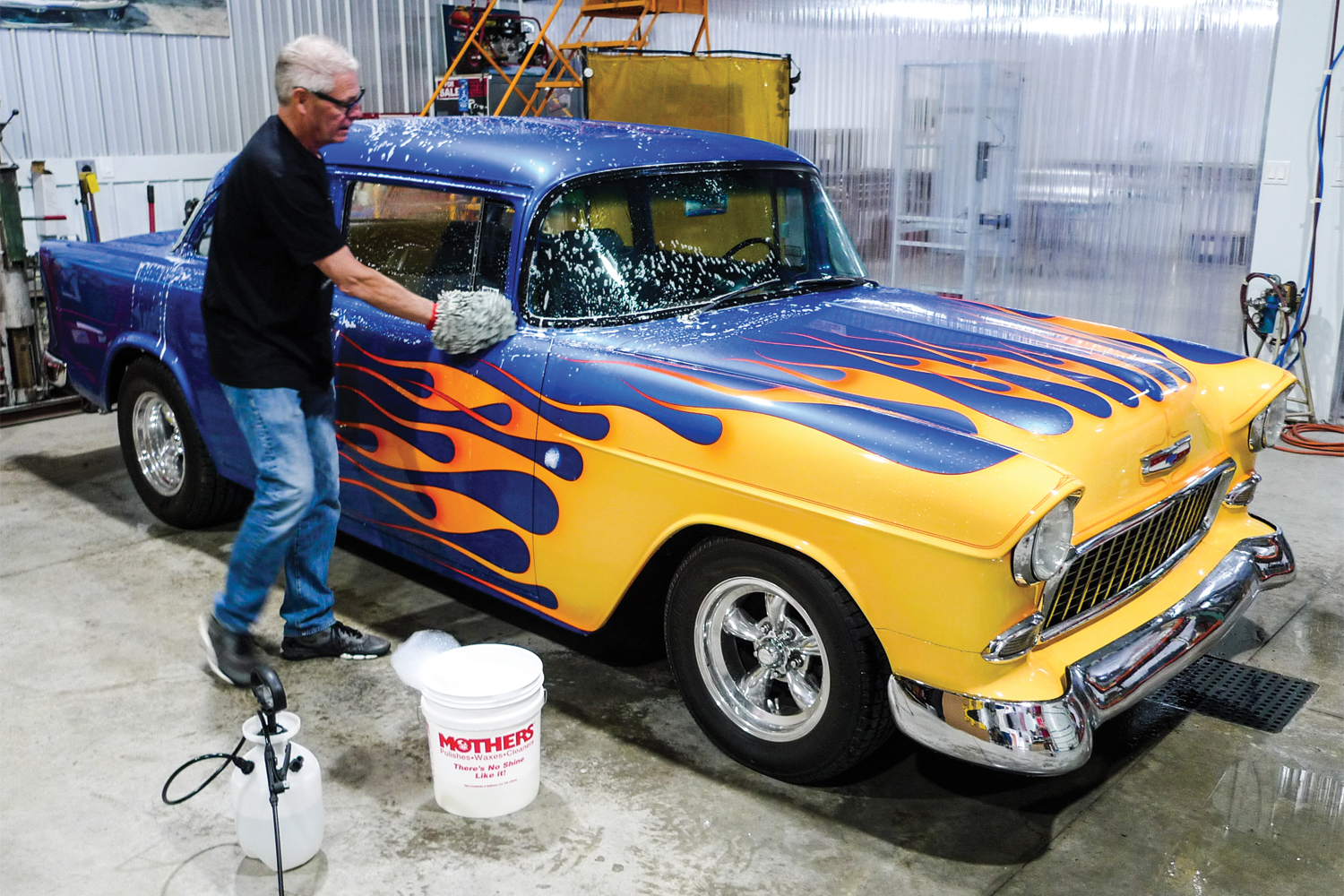
 Photography by The Author
Photography by The Authoror some, the repetitious task of car washing is doggone drudgery, like a mindless, mundane, monotonous chore. Others may take the very same task to higher levels as serious business. Either way, this’ll be about a wash.
No matter which car-caring category you might fall into, the safety tips we’ll offer here could take the sting out of road trip cleanups, as well as higher-level detailing procedures. At any rate, the little work party to follow must be thrown.
To ensure a dramatic effect, we’ve chosen a colorful test vehicle. With its rather bright yellow frontend, “Guardrail” Willie Martin’s flammable ’55 Chevy is a moving target for a multitude of suicidal flying insect types—including things that sting.
 Feature
Feature Photography by Jason Matthew
Photography by Jason Matthew


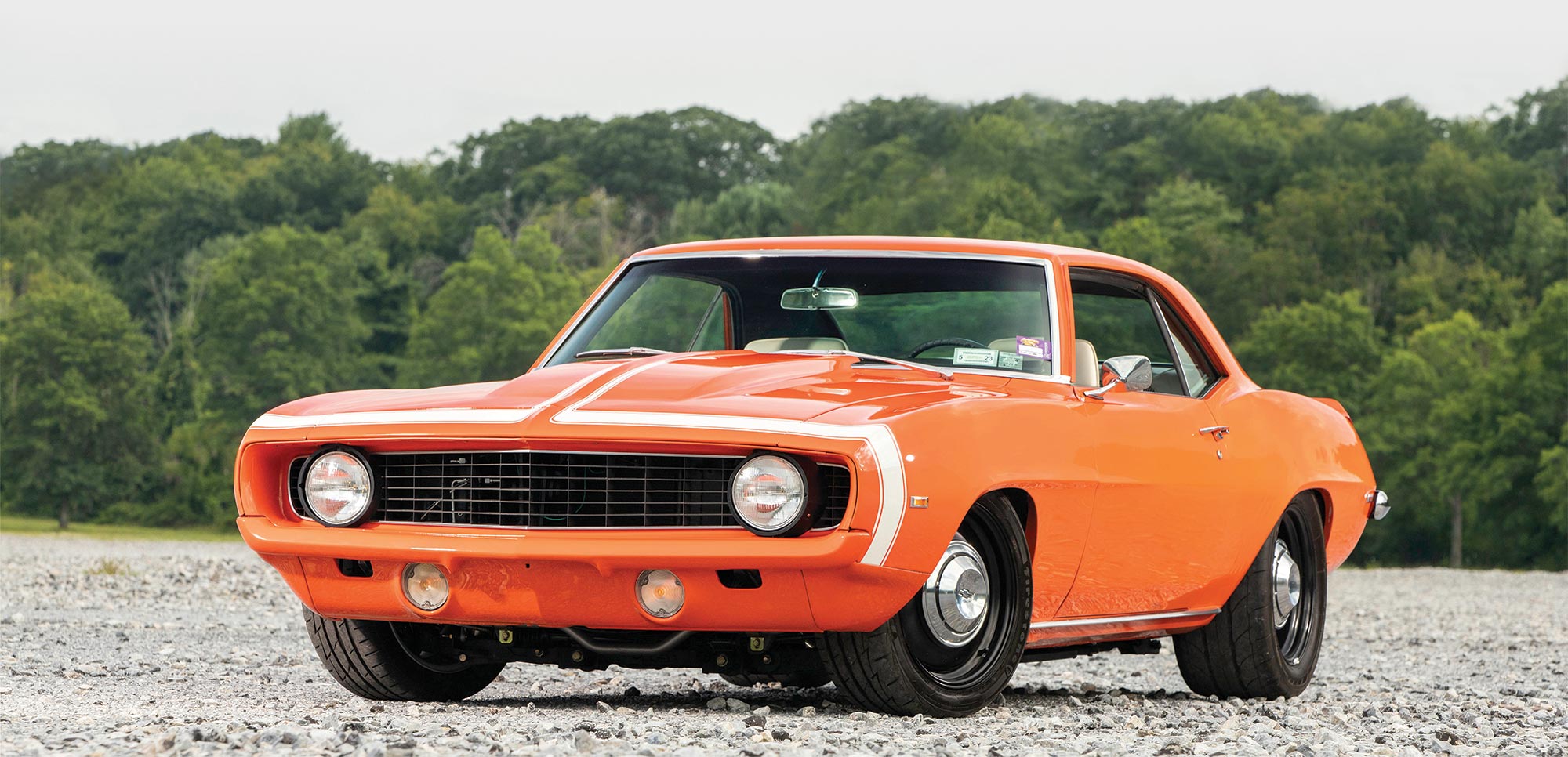
 EVENT
EVENT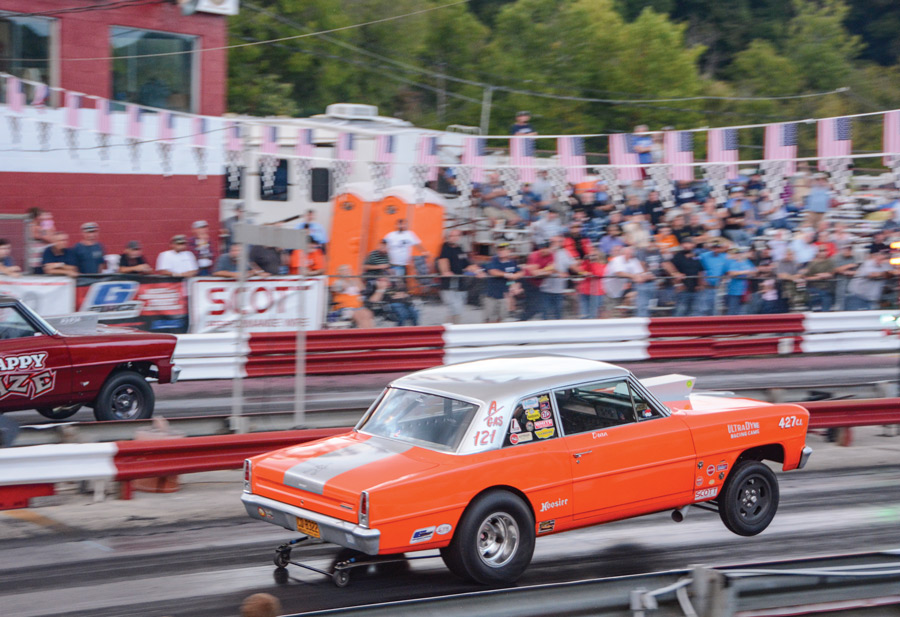


 Photography BY The Author
Photography BY The Authorld-school drag cars come in several varieties: survivors, restored cars, and tribute cars, just to name a few. Then there is the Southeast Gassers Association, a group of racers who have redefined vintage drag racing with side-by-side, heads-up action that replicates the excitement of the glory days of gasser racing. All cars must run on gasoline, utilize a manual transmission, and fit within the very strict appearance and mechanical rules package to compete.
Quain Stott, the man in charge of the Southeast Gassers Association, based the rules around the 1967 NHRA guidelines for the Gas Coupe and Sedan category. He put his own twist on it, by requiring all cars in the gas classes to use a straight axle and a manual transmission—no such rules existed back in the ’60s, but it was Stott’s way of keeping a level playing field. Even though the goal is period-correct gasser drag racing, there are several allowances for safety items to keep the drivers safe.
As the years have progressed, the group has been separated into three gas classes (A, B, and C, based on the car’s cubic inches and weight). Additionally, a Super Stock class has been added for a little more variety. You’ll notice the cars in the photo gallery that do not have a straight axle belong to the Super Stock category. All classes in Southeast Gassers Association racing go through technical inspection at each race and must be weighed after every round win to ensure they are within the rules. Visual inspections are also made before each race to ensure the period-correct appearance of each car. And this isn’t a loosely prepared set of guidelines—this is a legitimate rule book and it’s strictly enforced to keep the spirit of this event in check.
Advertiser
- American Autowire41
- American Legend Wheels71
- Art Morrison Enterprises51
- Auto Metal Direct43
- Borgeson Universal Co.57
- Bowler Performance Transmissions87
- Classic Industries53
- Classic Instruments9
- Classic Performance Products4-5, 83, 92
- Concept One Pulley Systems85
- Dakota Digital91
- Danchuk USA11
- Duralast12-13
- FiTech EFI67
- Gandrud Chevrolet85
- Golden Star Classic Auto Parts7
- Heidts Suspension Systems79
- HushMat83
- John’s Industries87
- Lokar2
- National Street Rod Association45
- New Port Engineering83
- Original Parts Group85
- Performance Online59
- PerTronix39
- Powermaster Performance79
- Roadster Shop29
- Rod Shows61
- Scott’s Hotrods71
- Speedway Motors25
- That’s Great News85
- Thermo-Tec Automotive87
- Tuff Stuff Performance Accessories67
- Vintage Air6
- Wilwood Engineering27
- Year One83
 BOWTIE BONEYARD
BOWTIE BONEYARD Photography by the Author
Photography by the Author
 Photography by the Author
Photography by the Author
ersonal luxury is what the Monte Carlo was all about. Unlike a full-dress Caprice, which was based on the comparatively huge Impala chassis or the Corvette, that though “personal” was far from luxurious, the Monte Carlo was perfectly sized with just two doors and enough plush upholstery to satisfy any fur coat salesman.
It’s often forgotten, but the Monte Carlo grew from the fertile mind of John Z. DeLorean. Yes, Johnny Z. may be best remembered for the ’64 Pontiac GTO, the gullwing door Back To The Future DMC-12 exoticar and a messy hotel room encounter with DEA agents—for which he was acquitted (see, he really was “a legitimate businessman”)—but without him the Monte wouldn’t be.
That’s because before he became president of Chevrolet on February 15, 1969, DeLorean was head of Pontiac Motor Division where he masterminded the creation of the all-new redesign of the Pontiac Grand Prix for 1969. You know the ’69 Grand Prix, it’s the car with the 6-foot-long hood.

